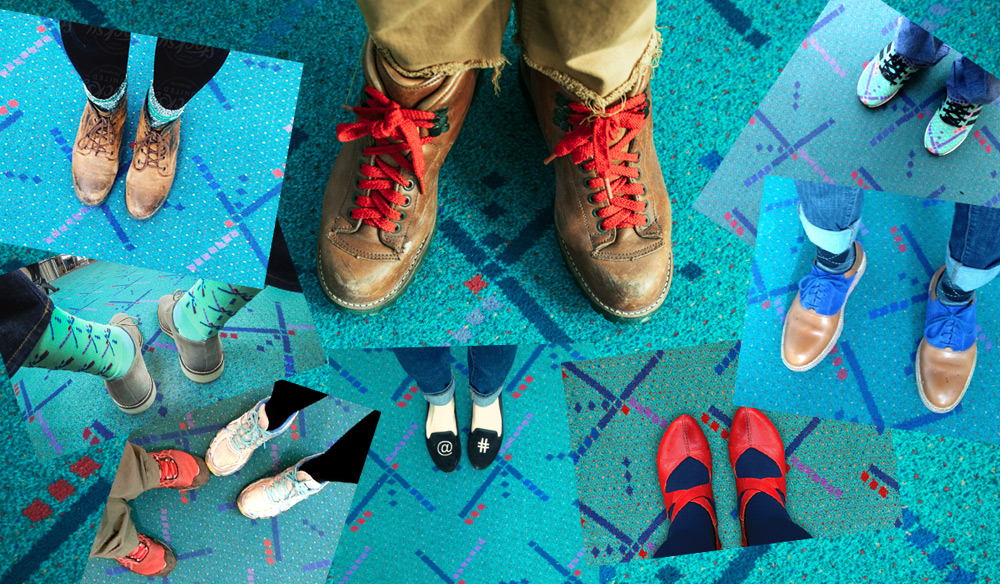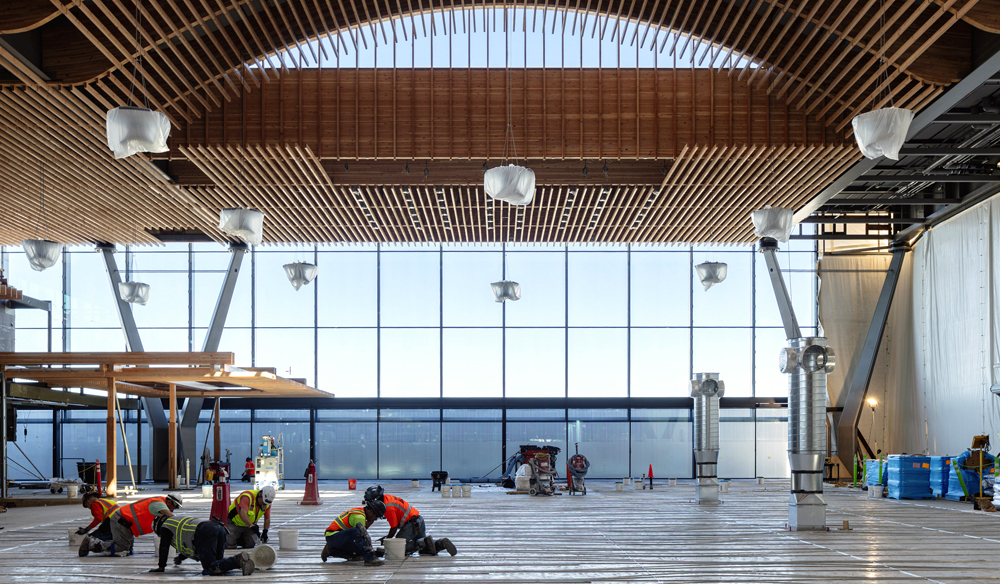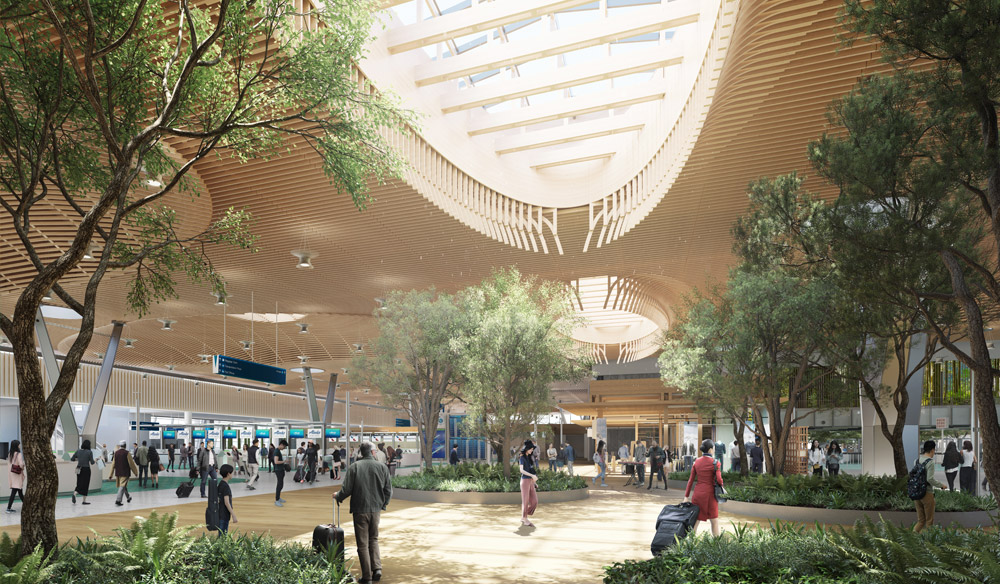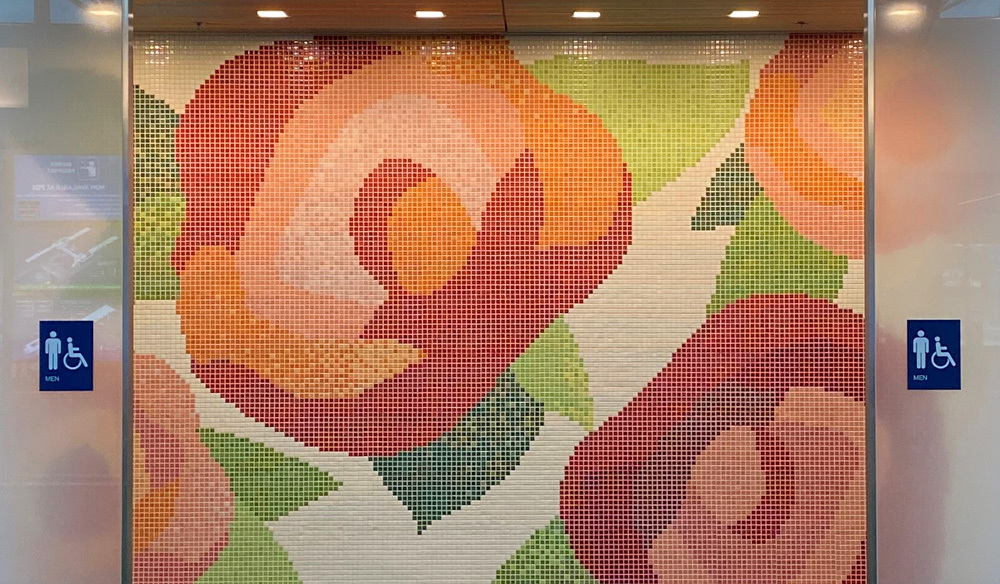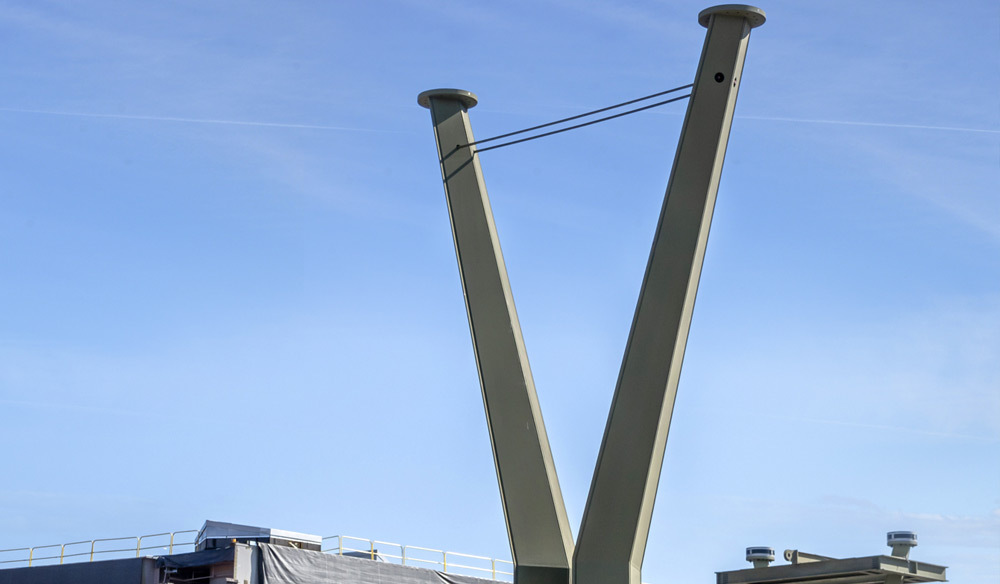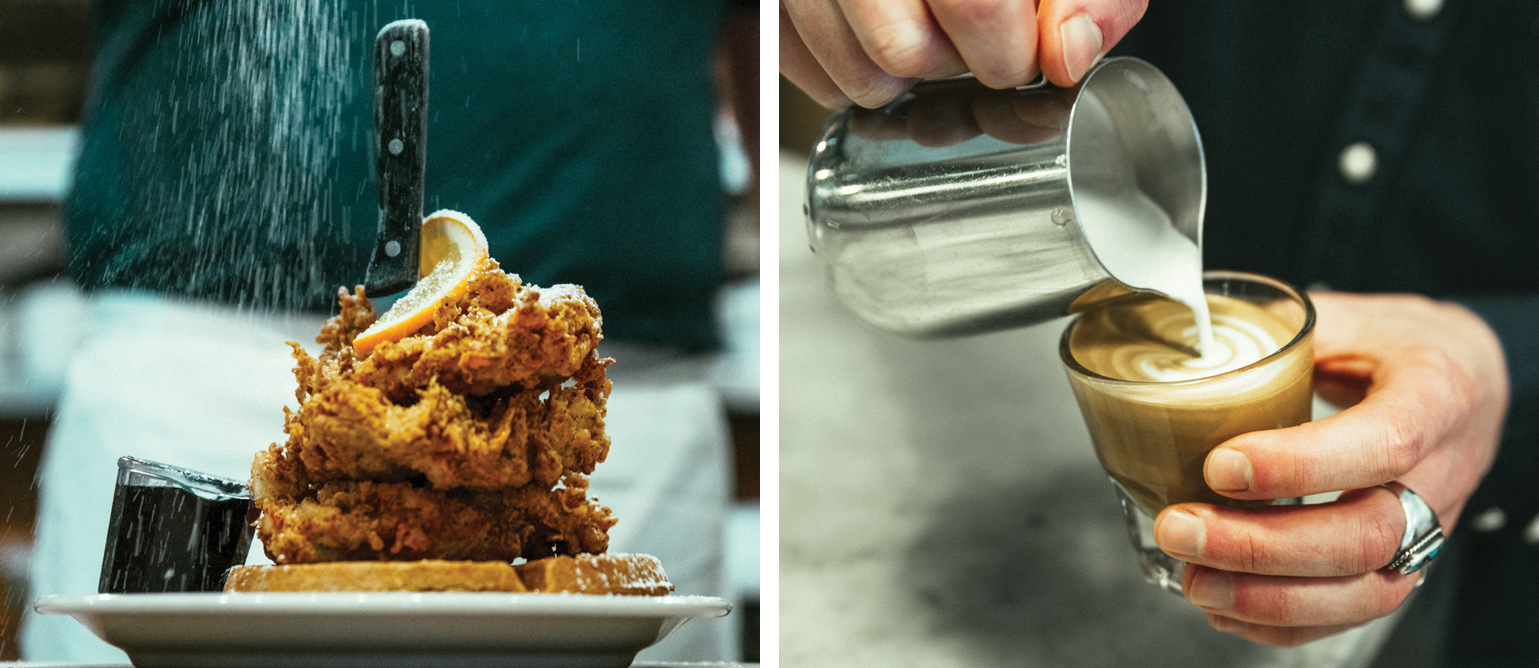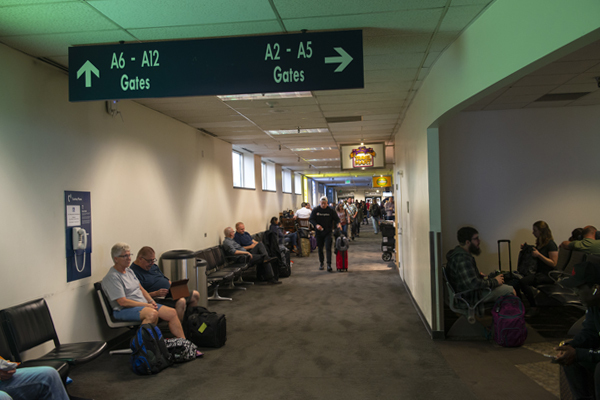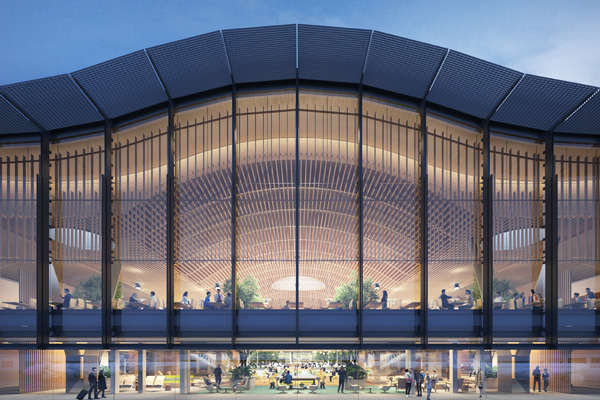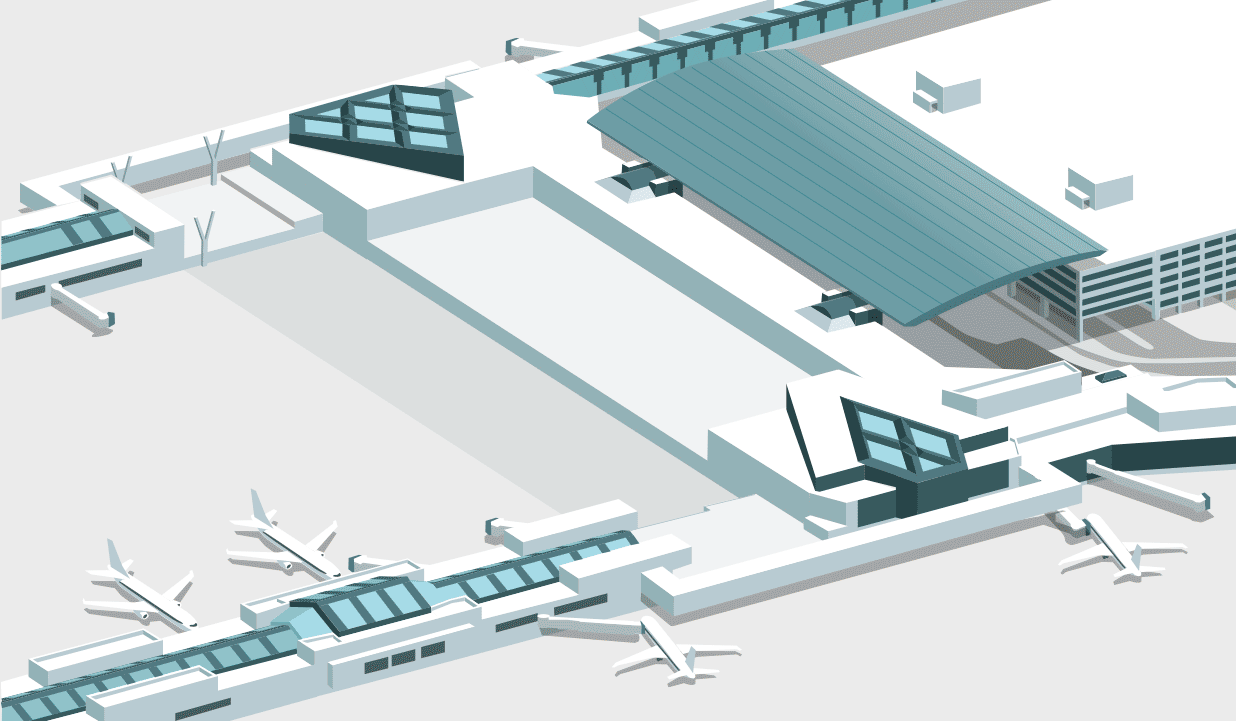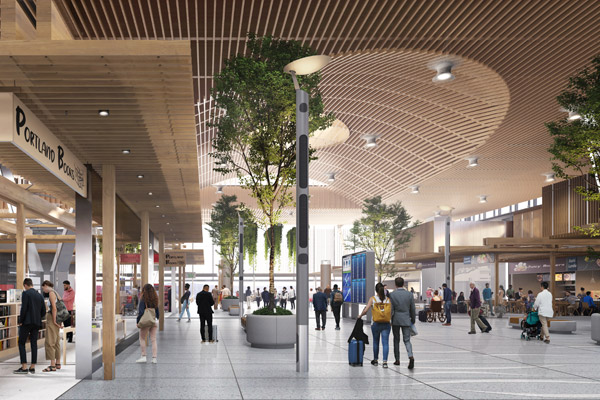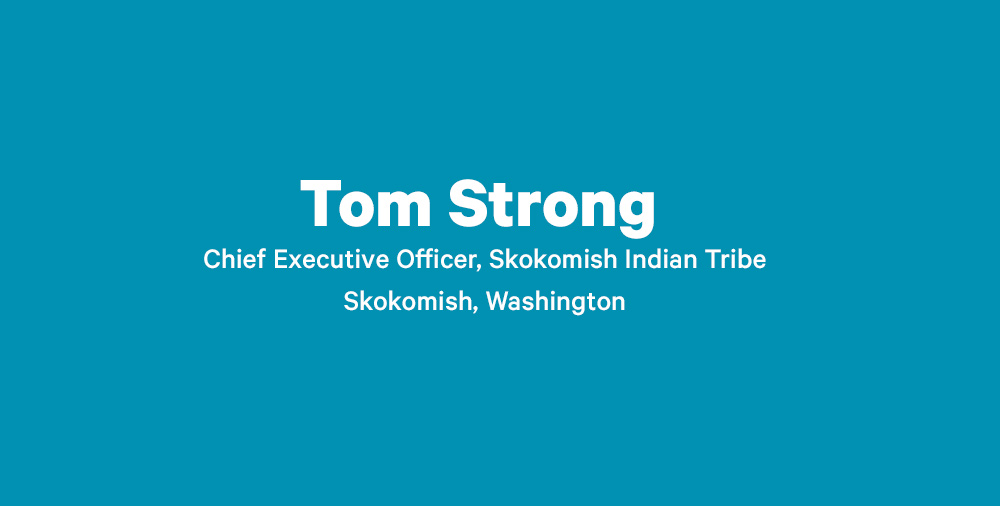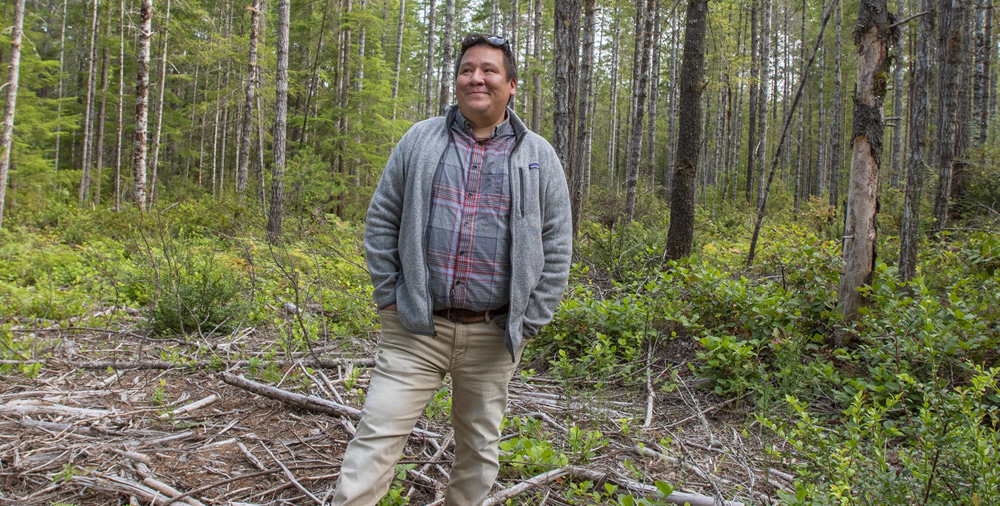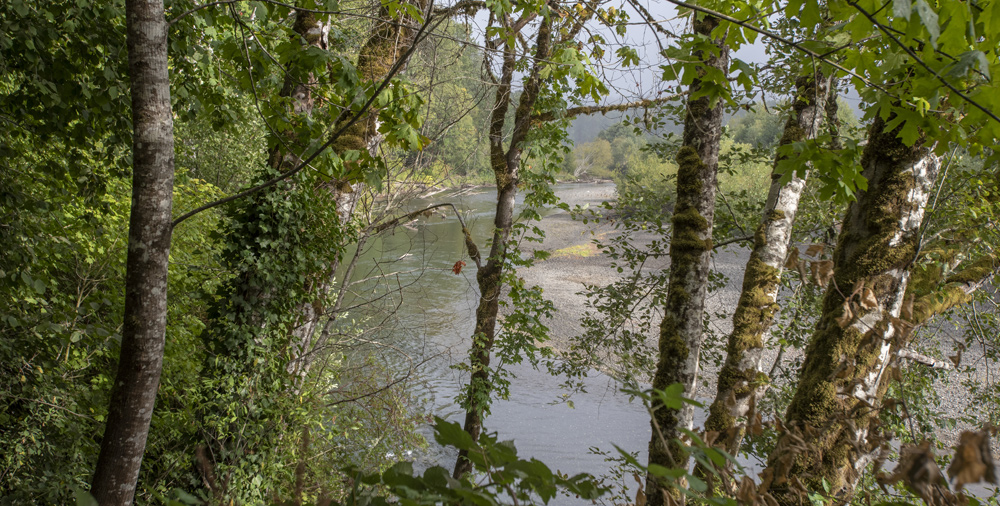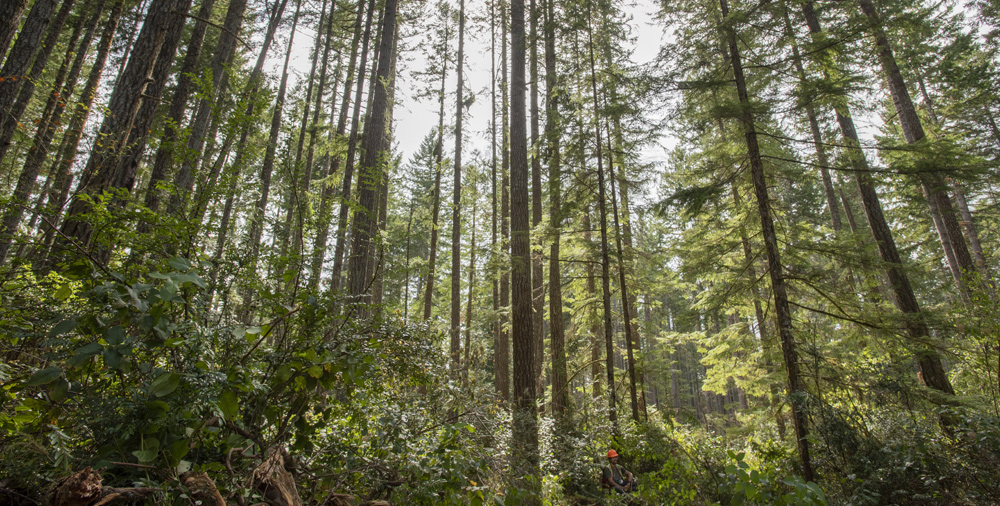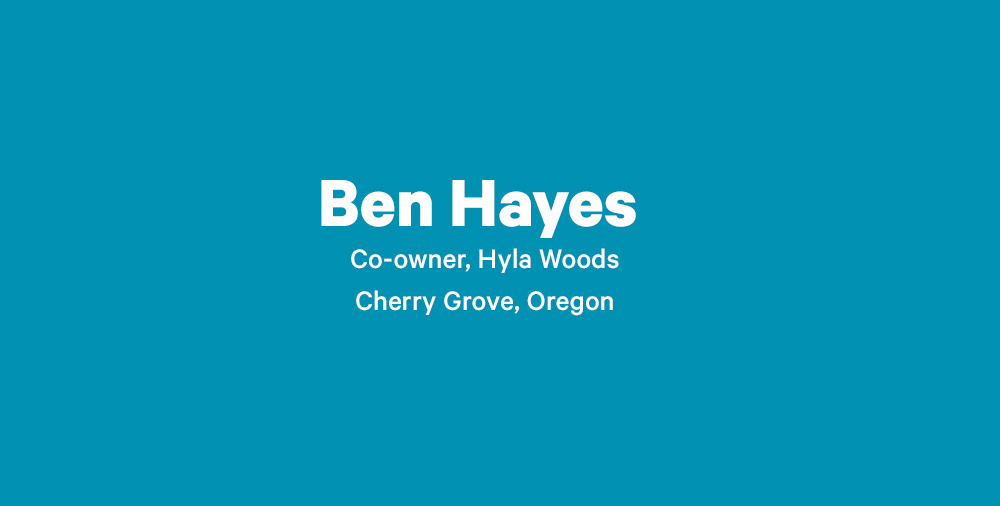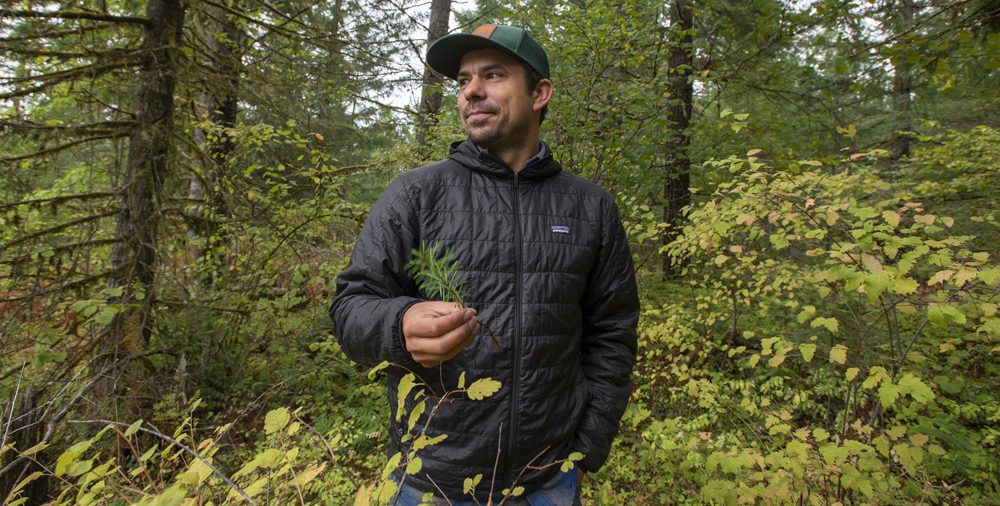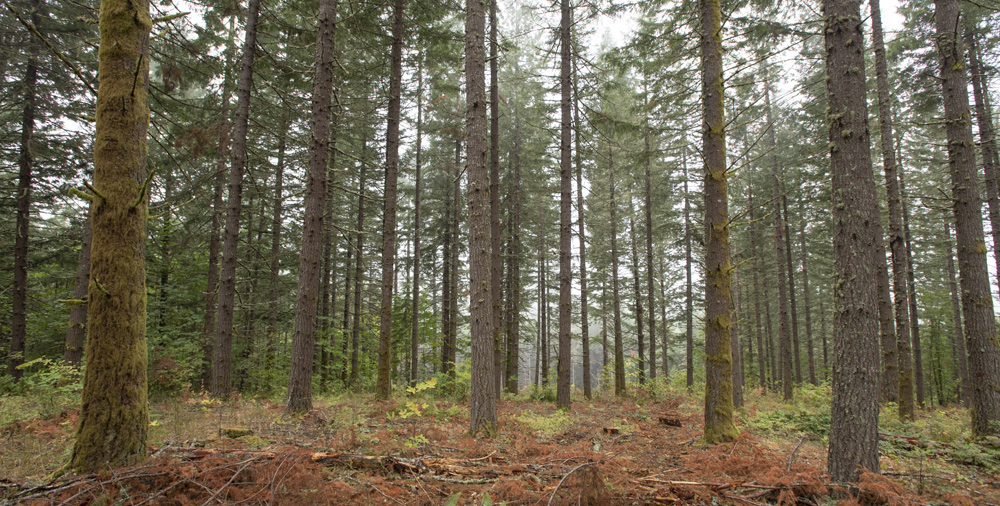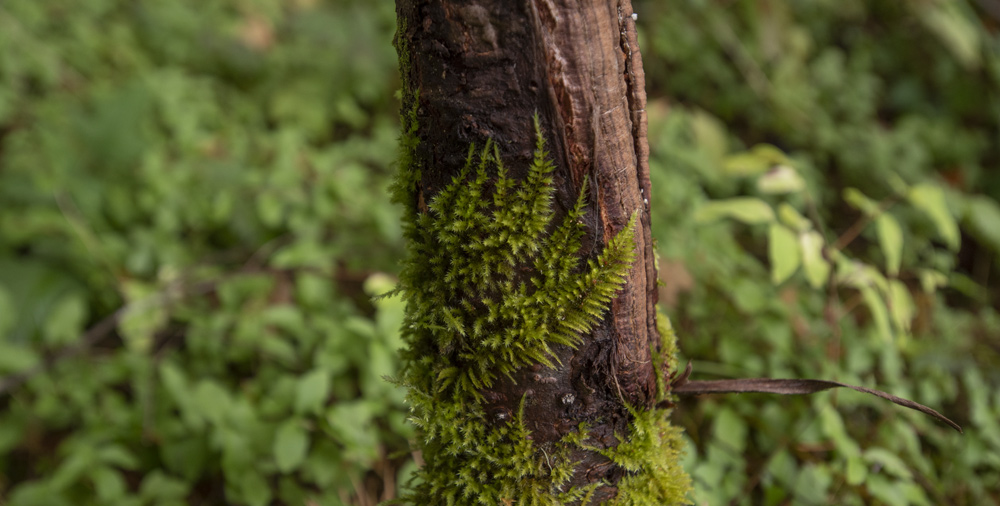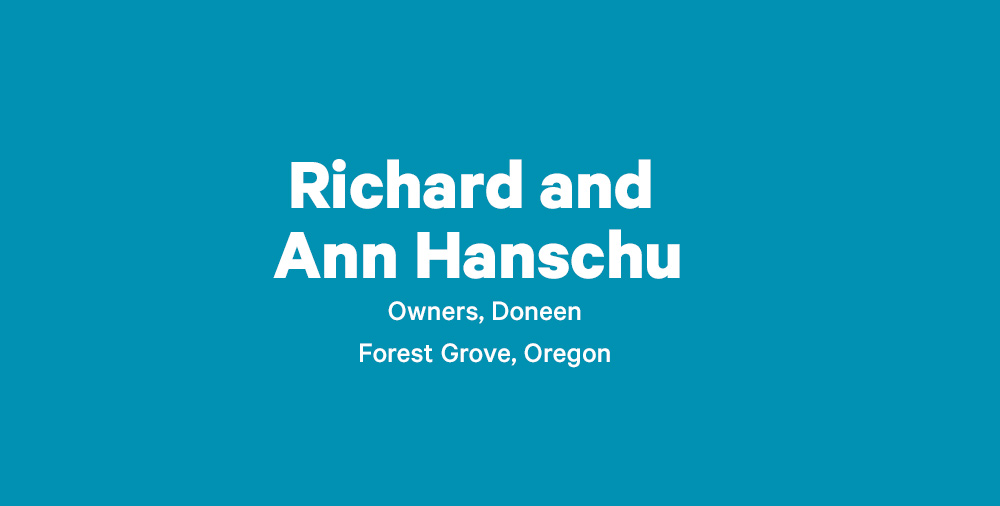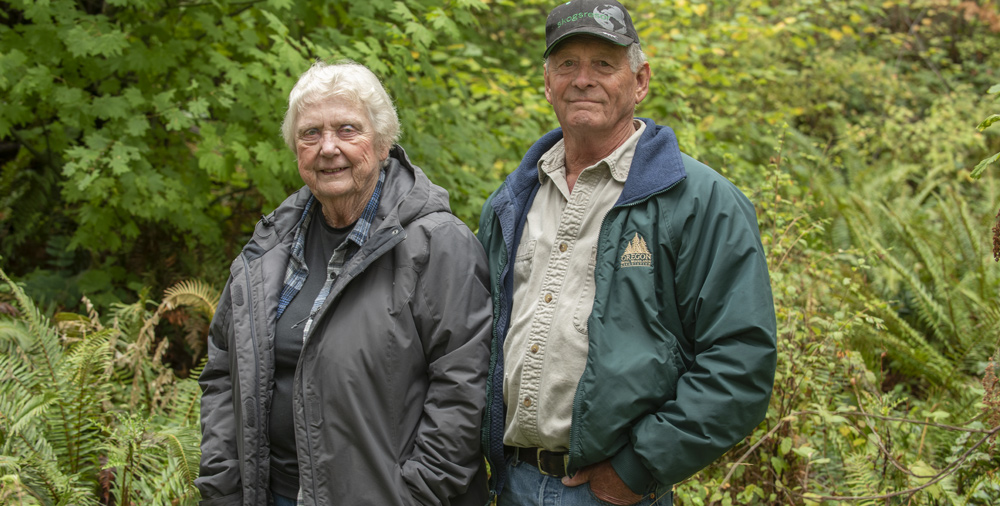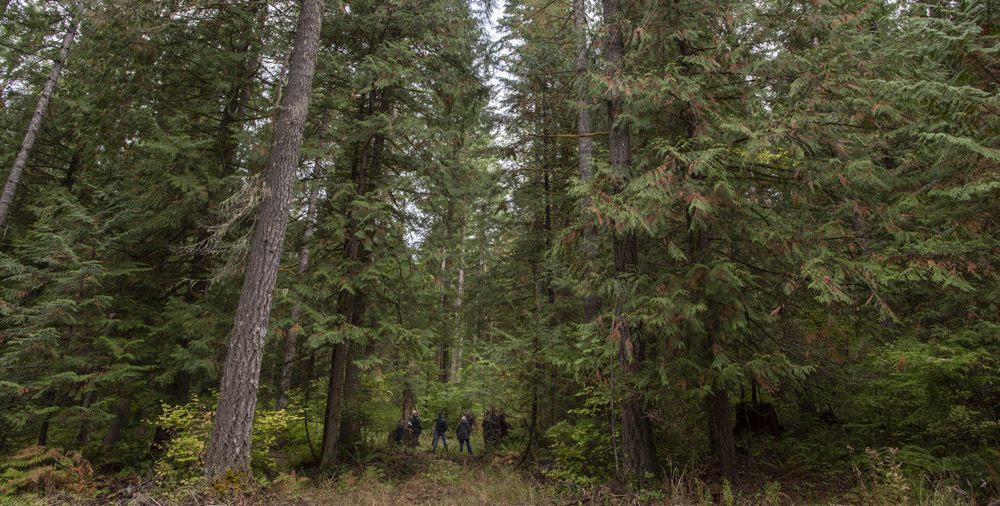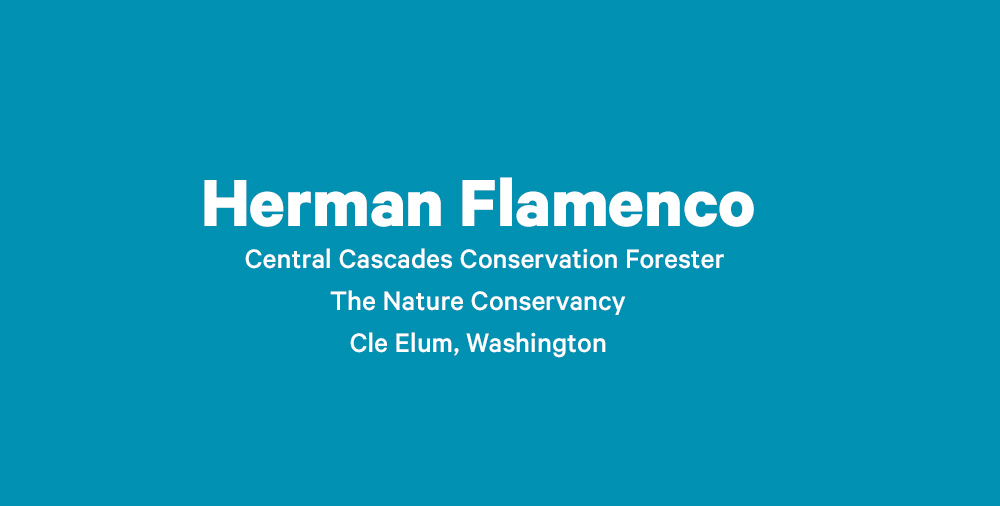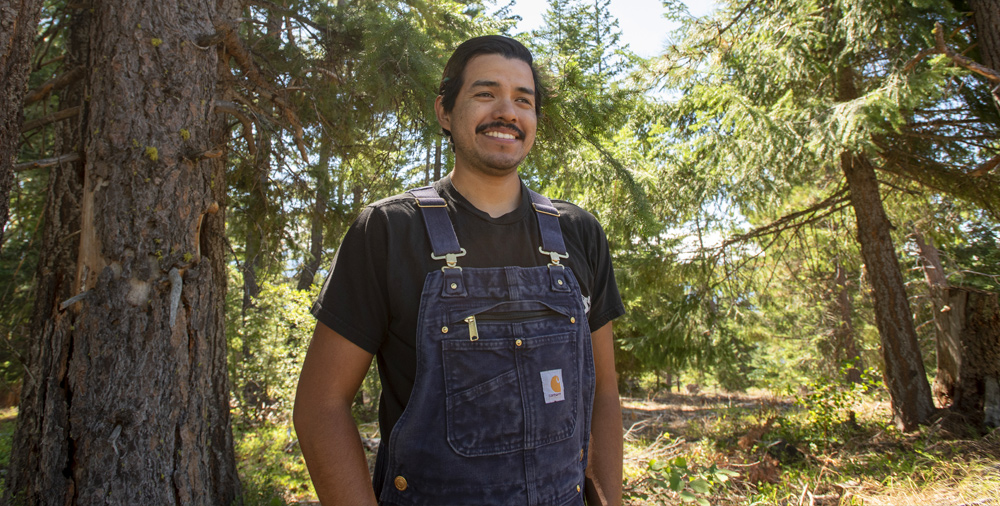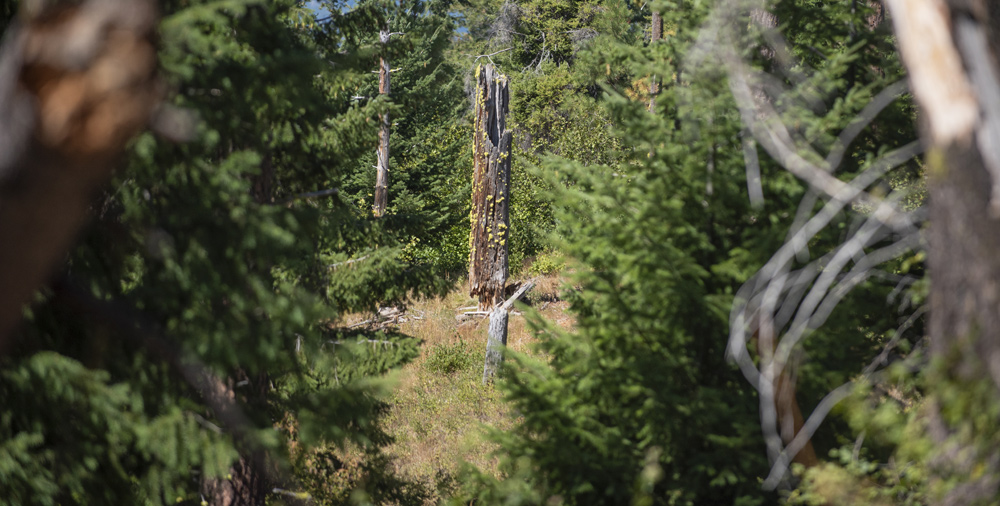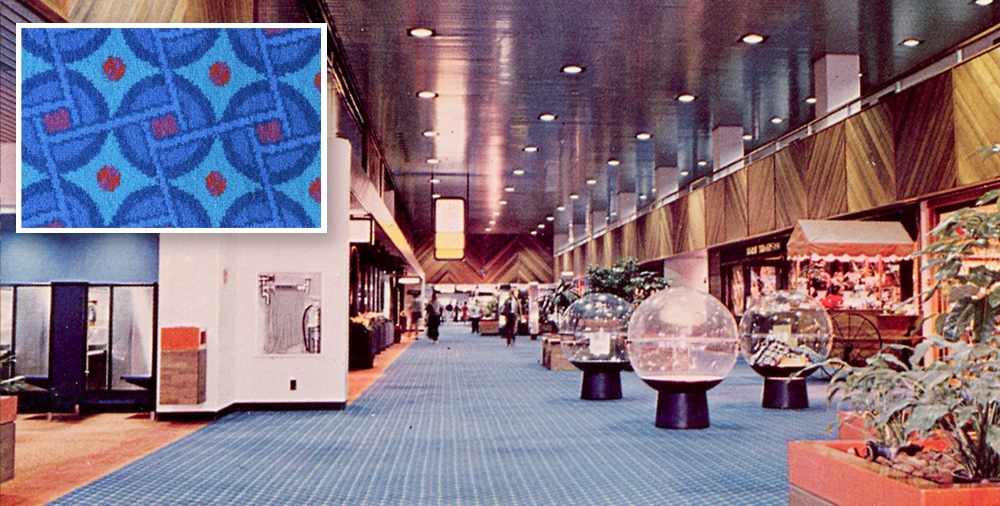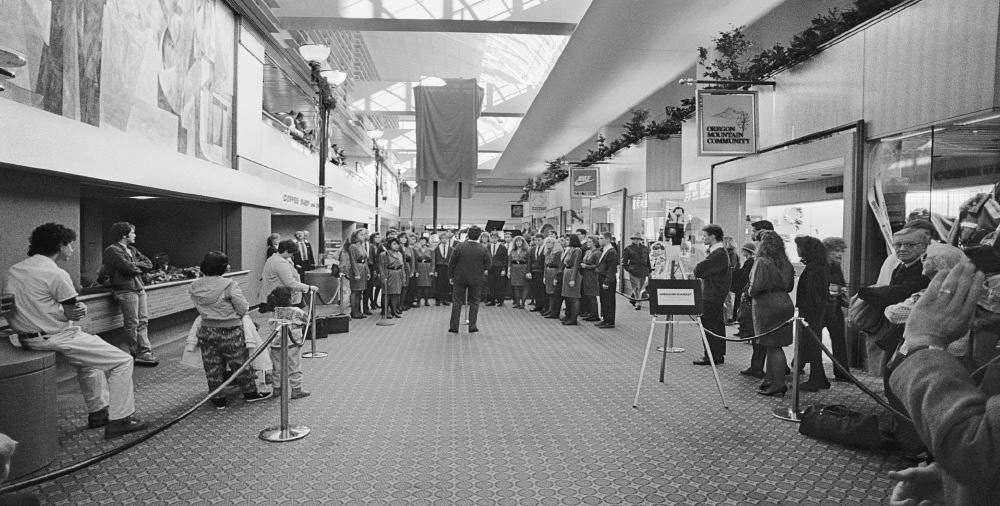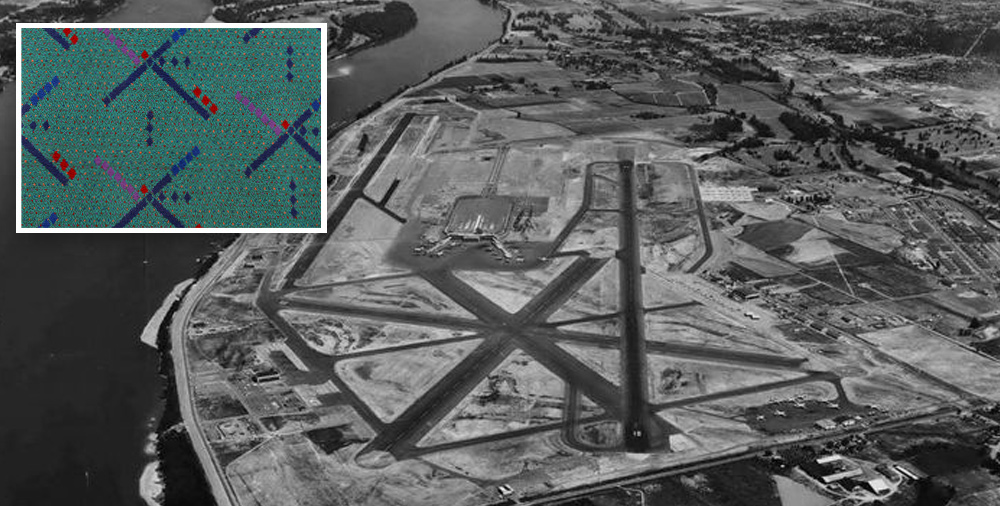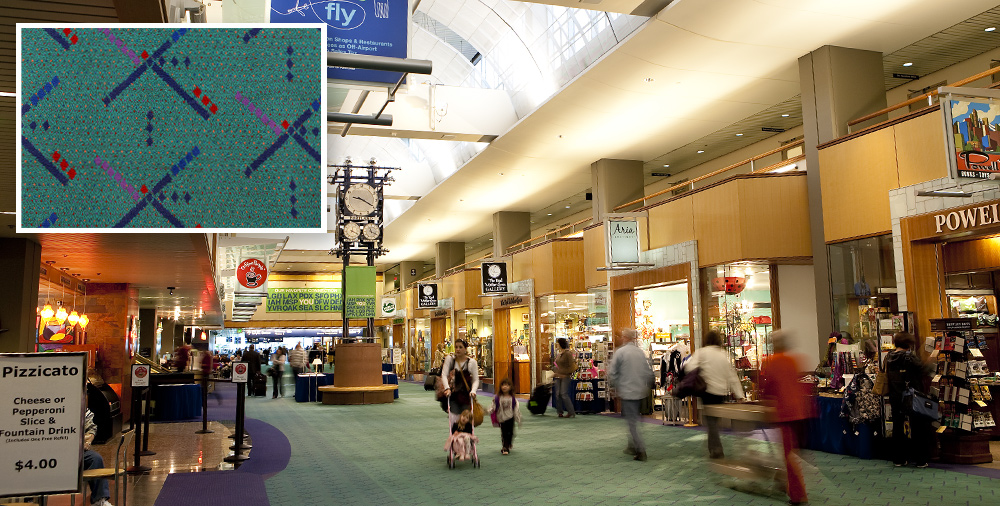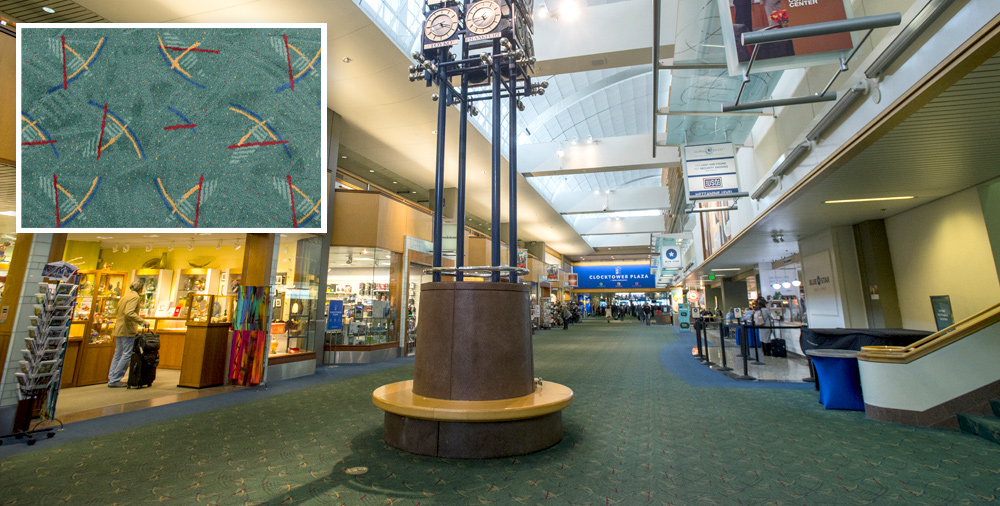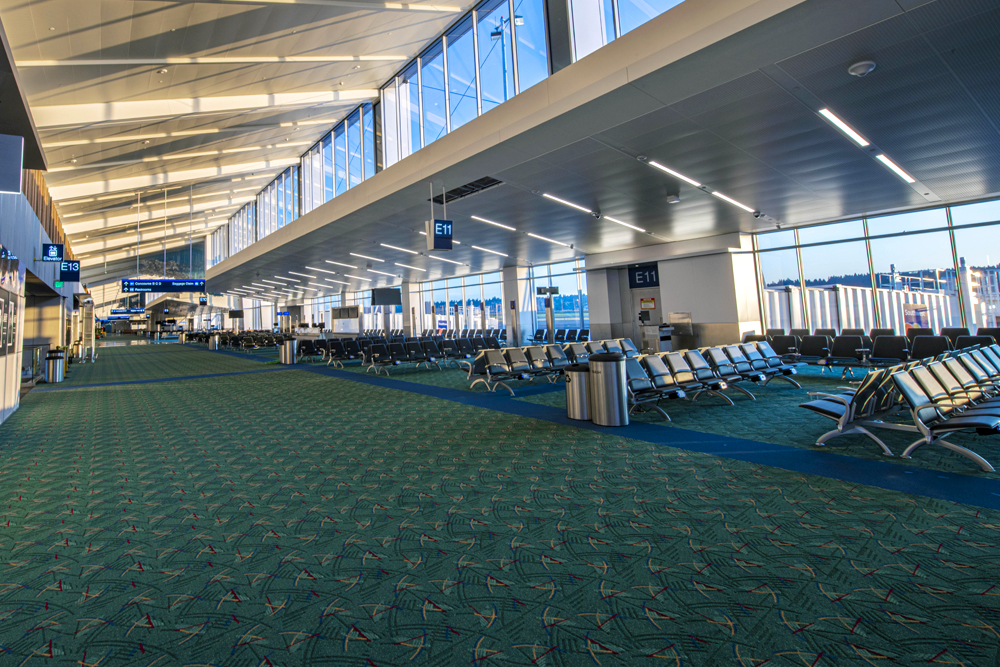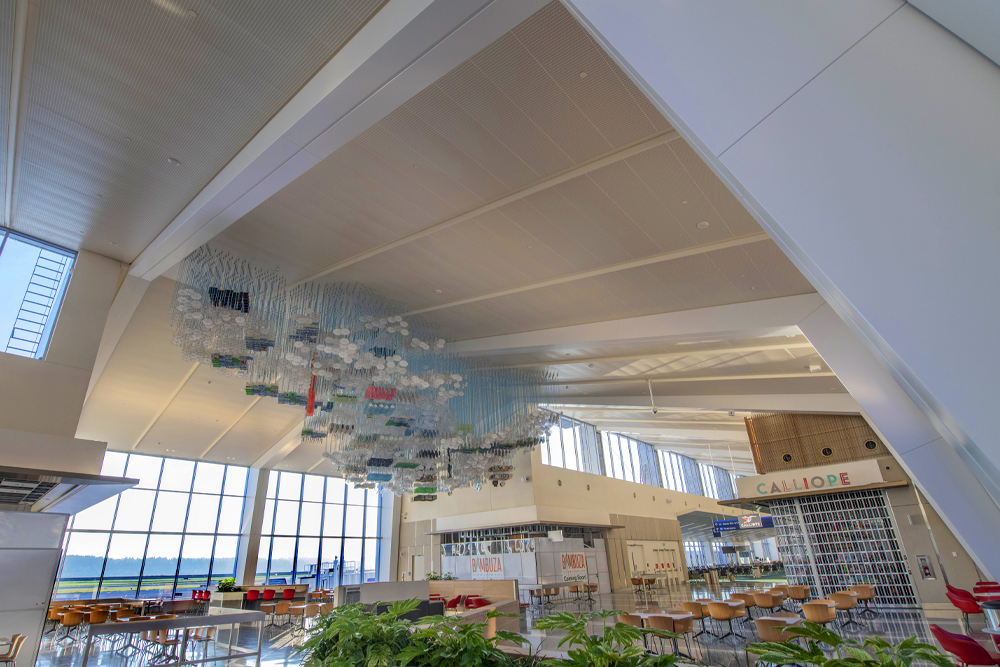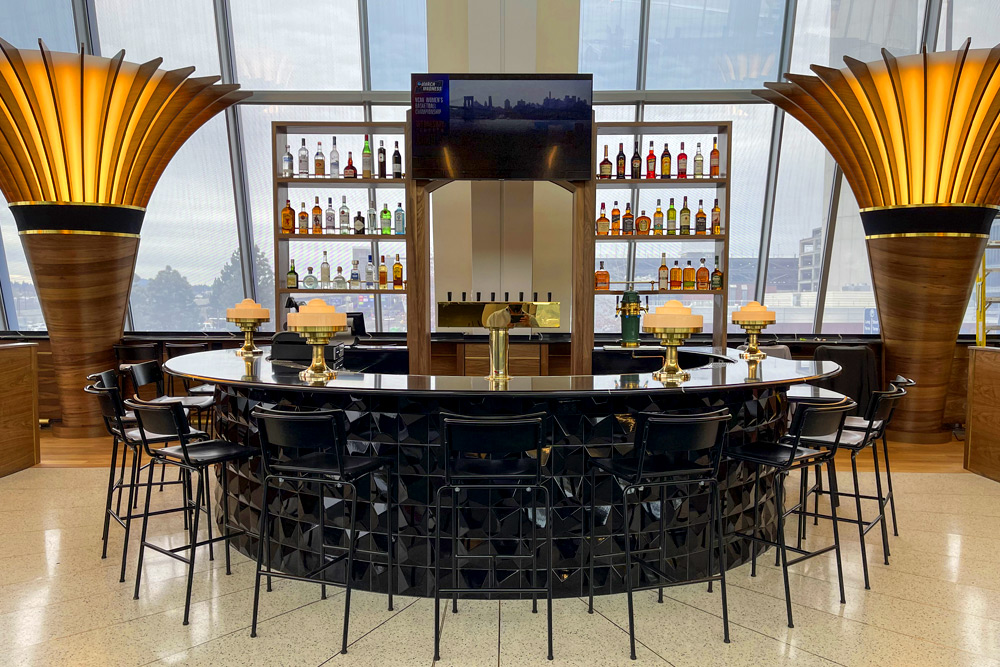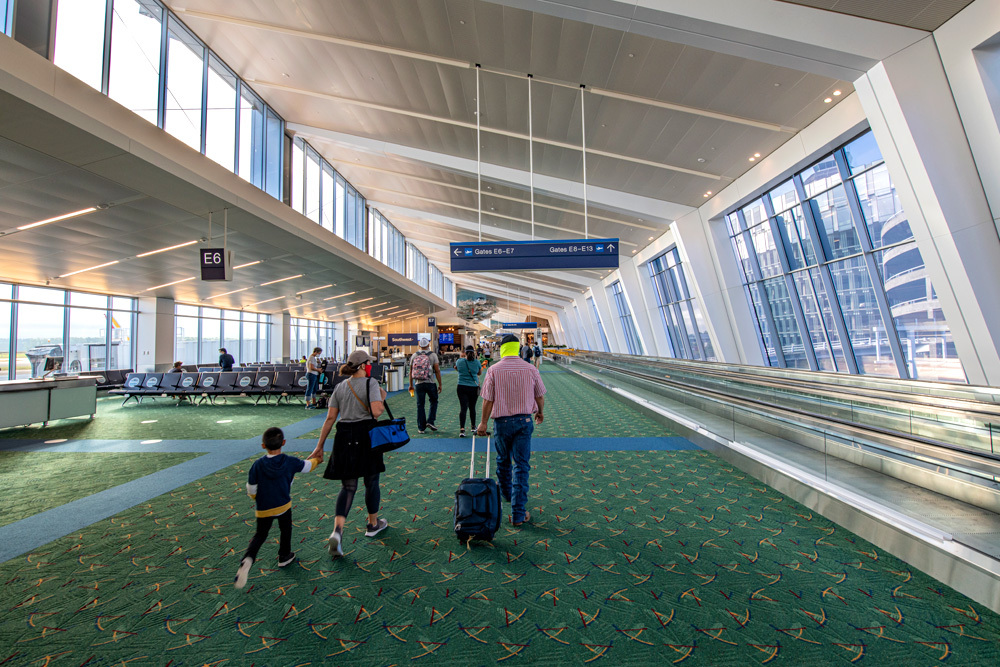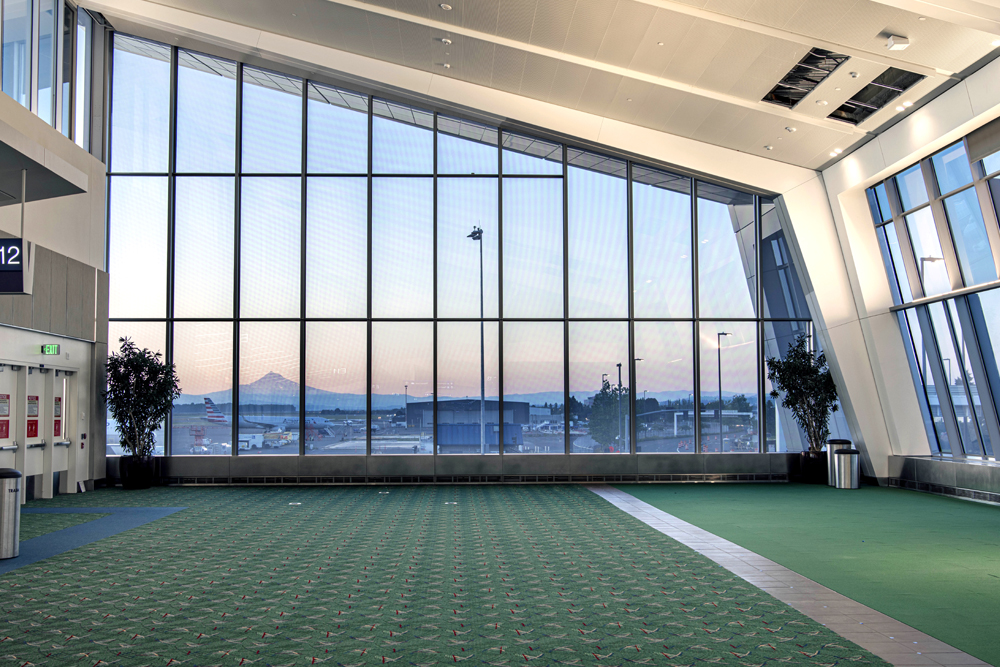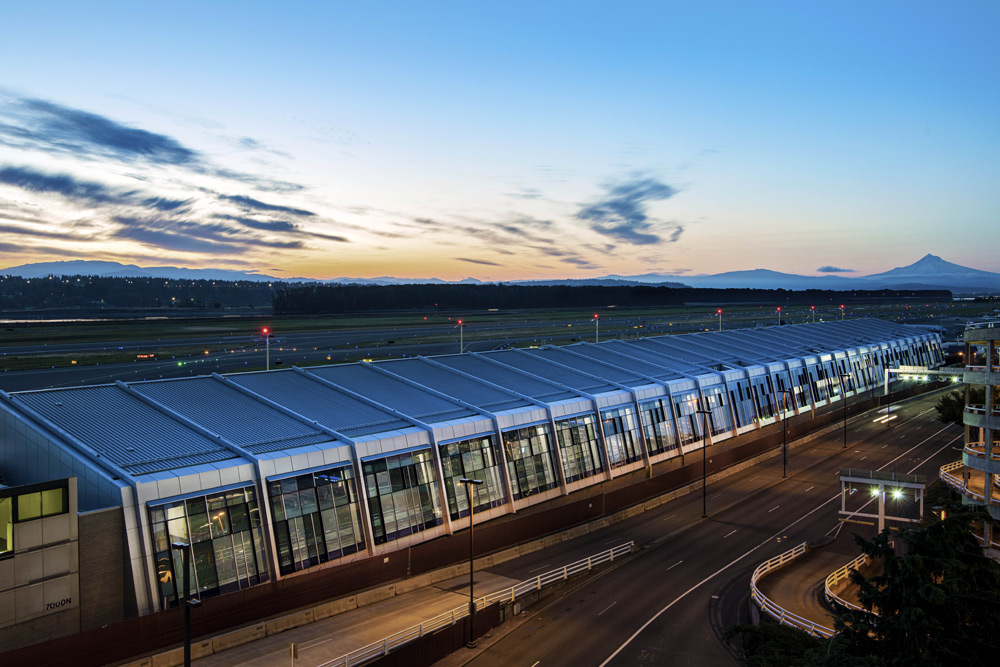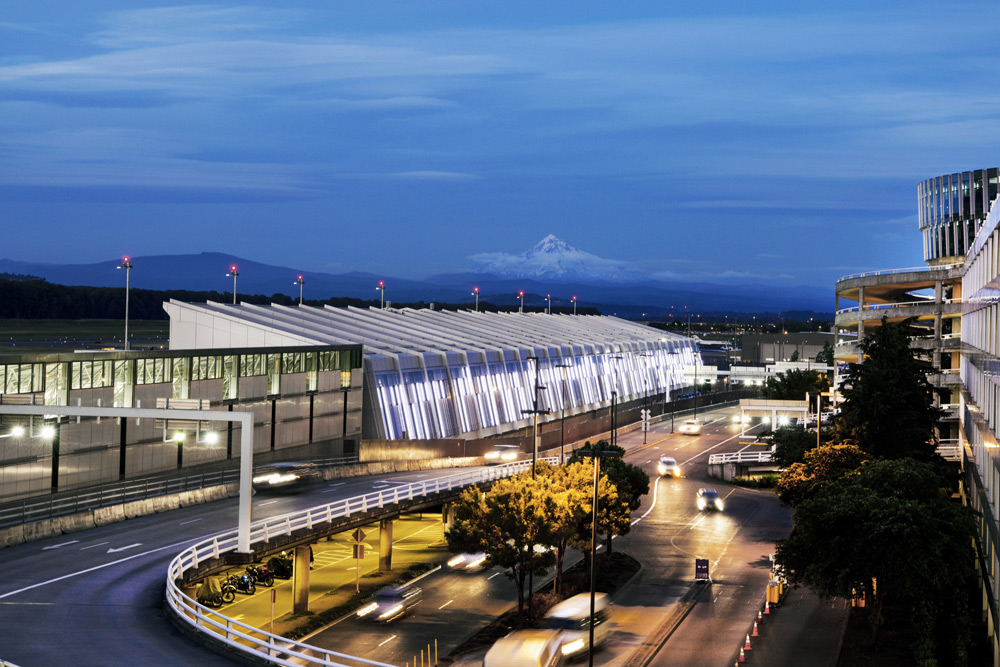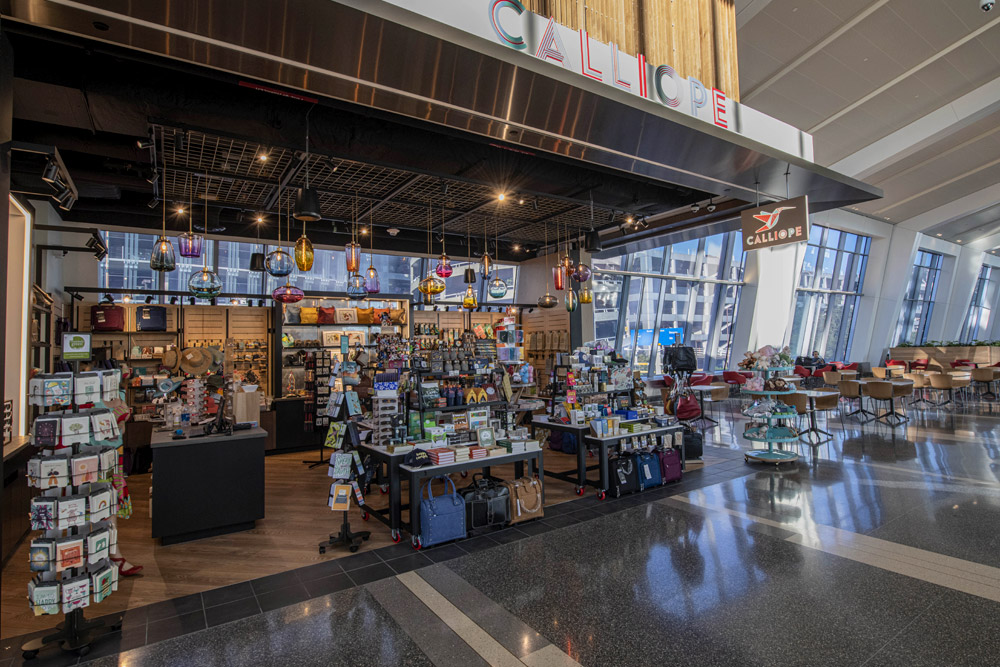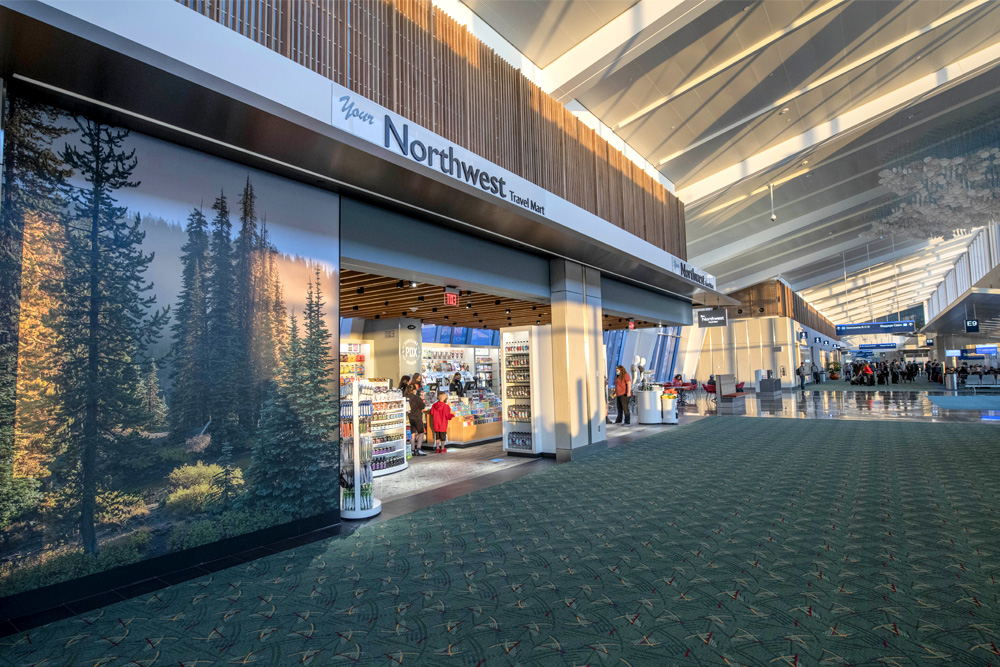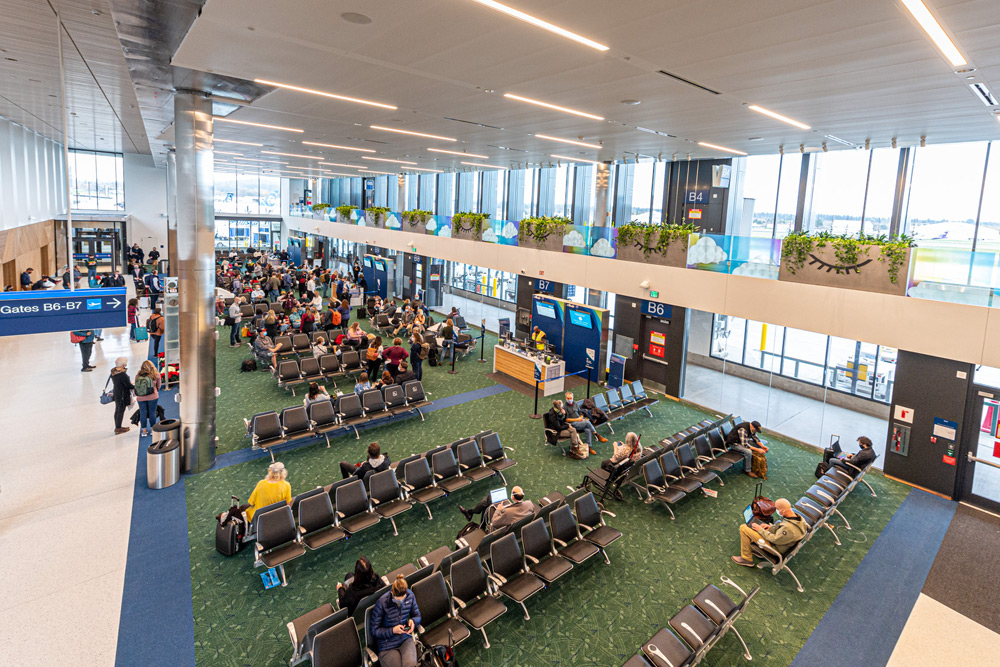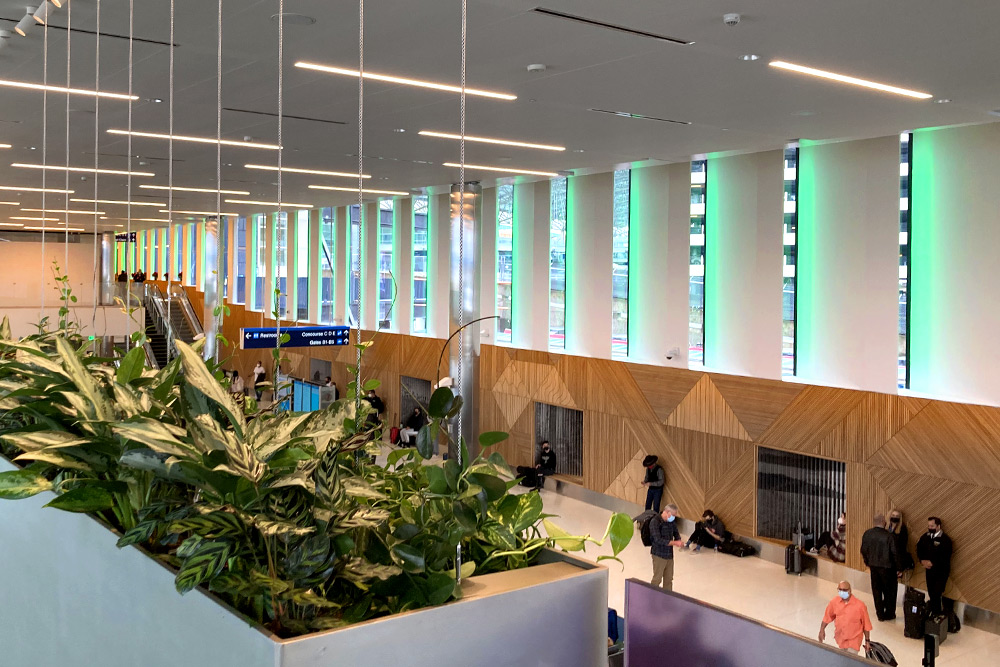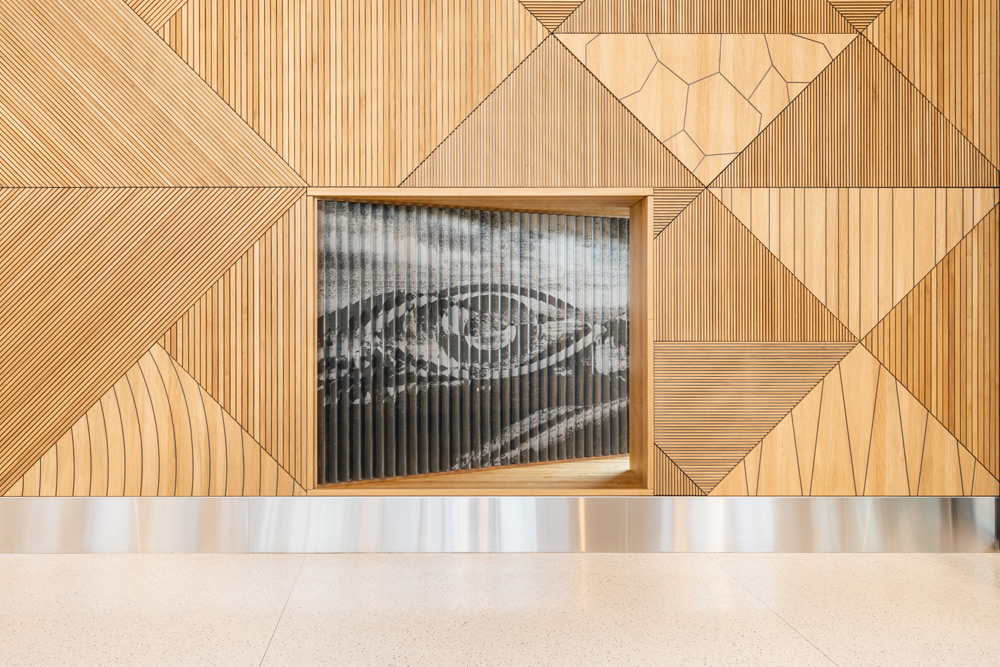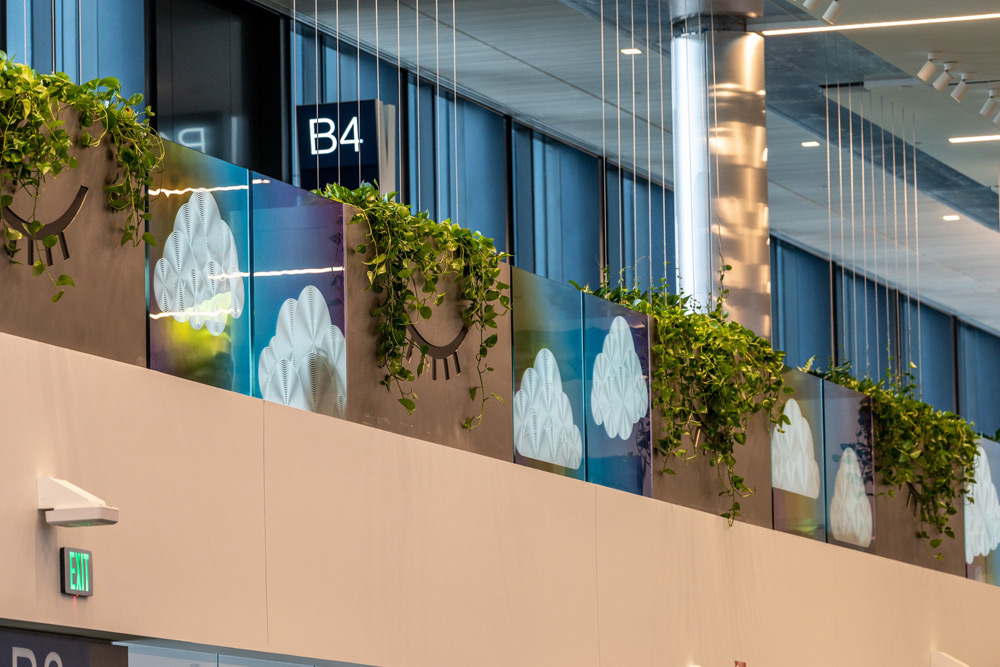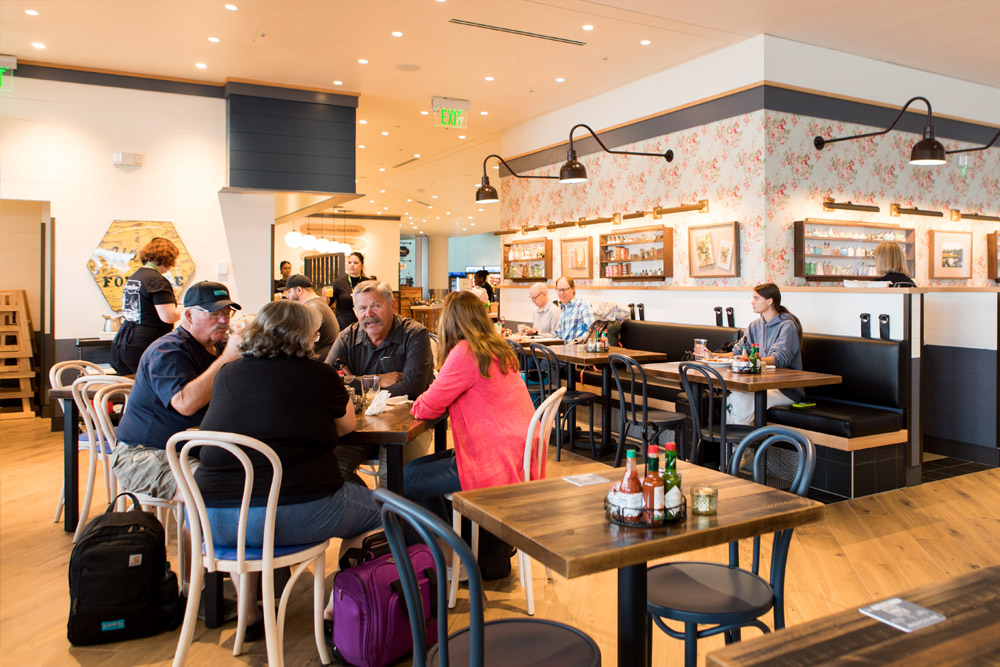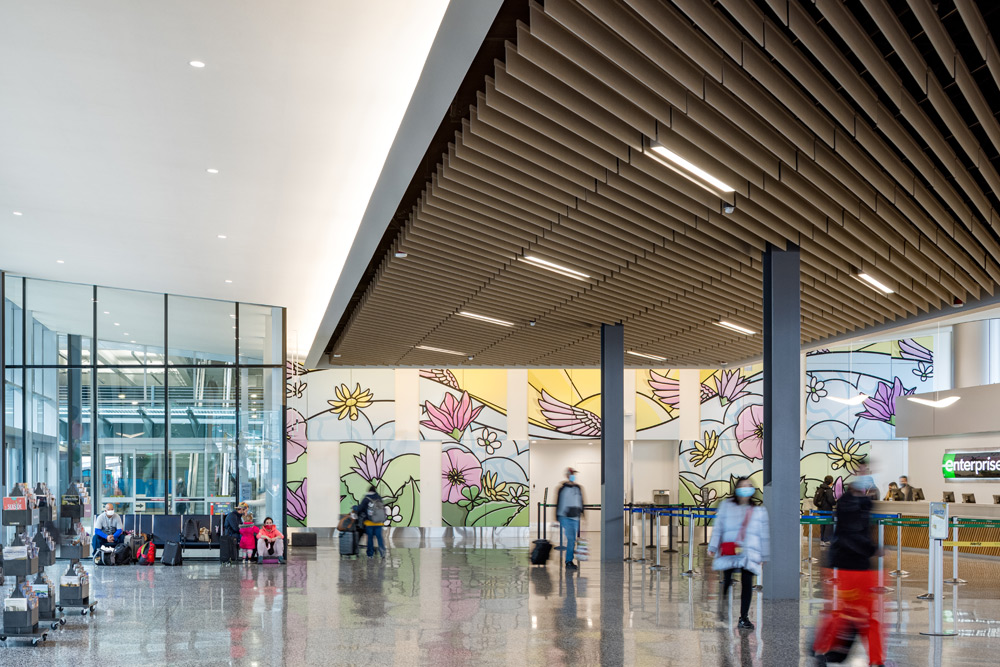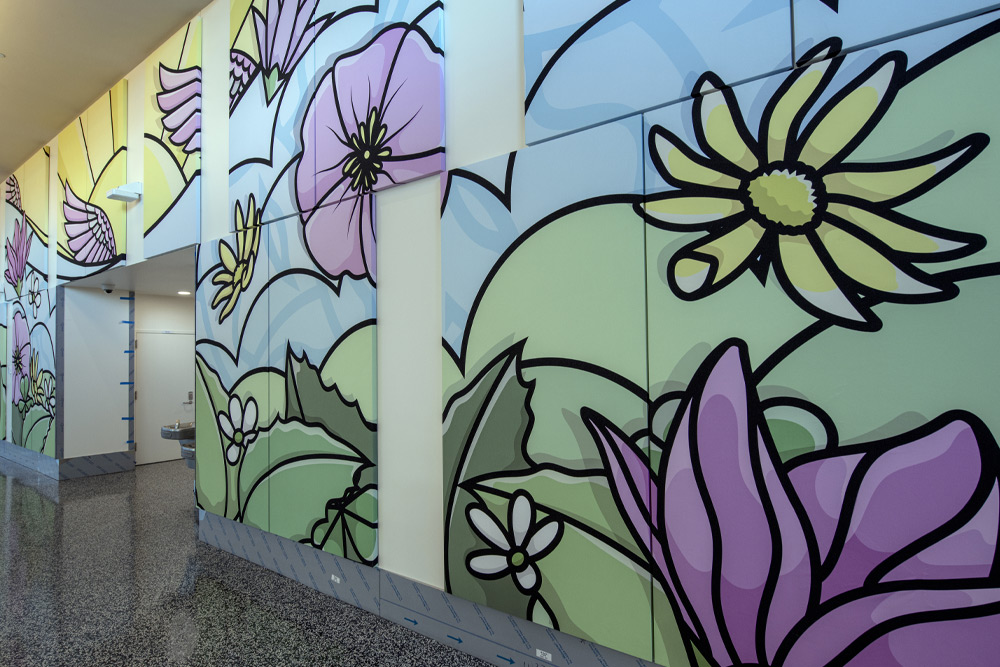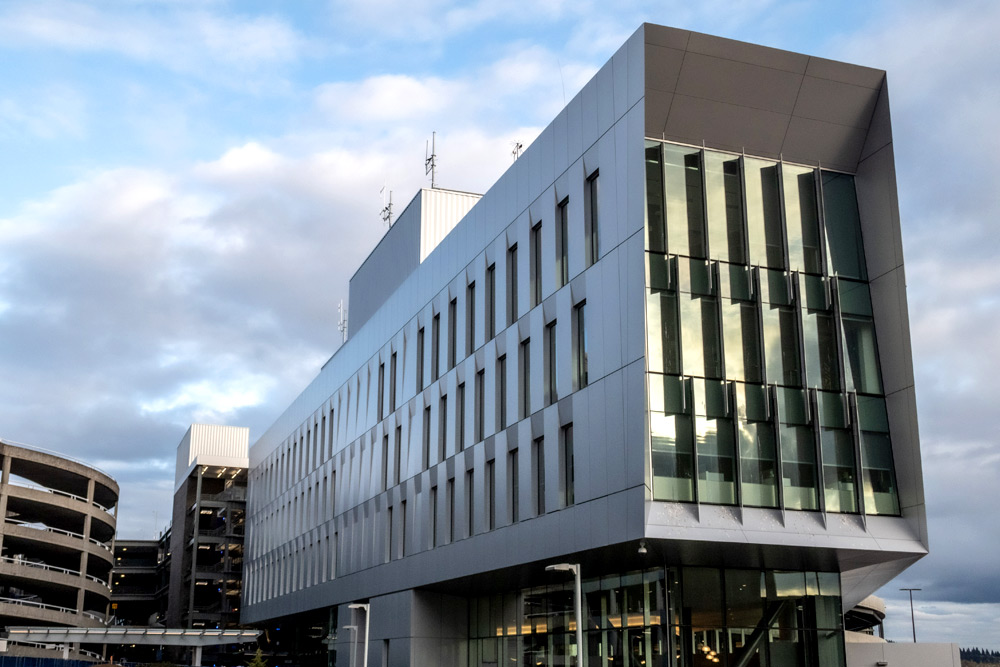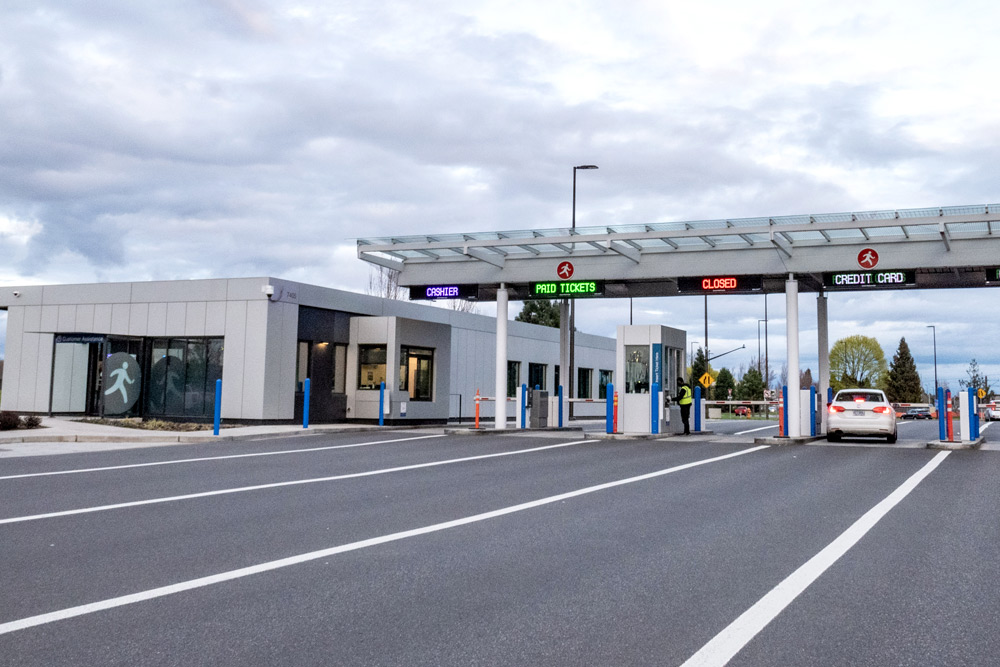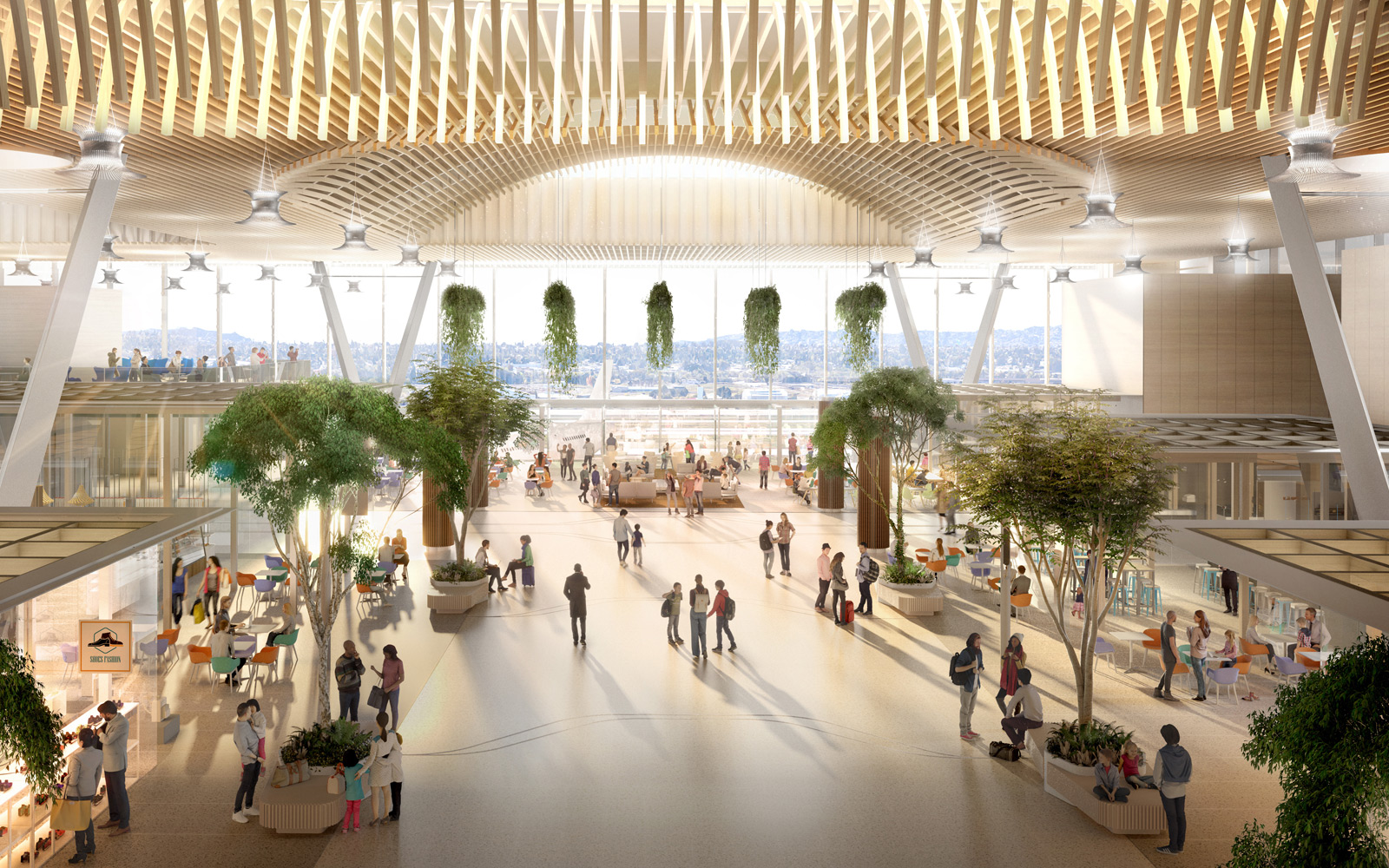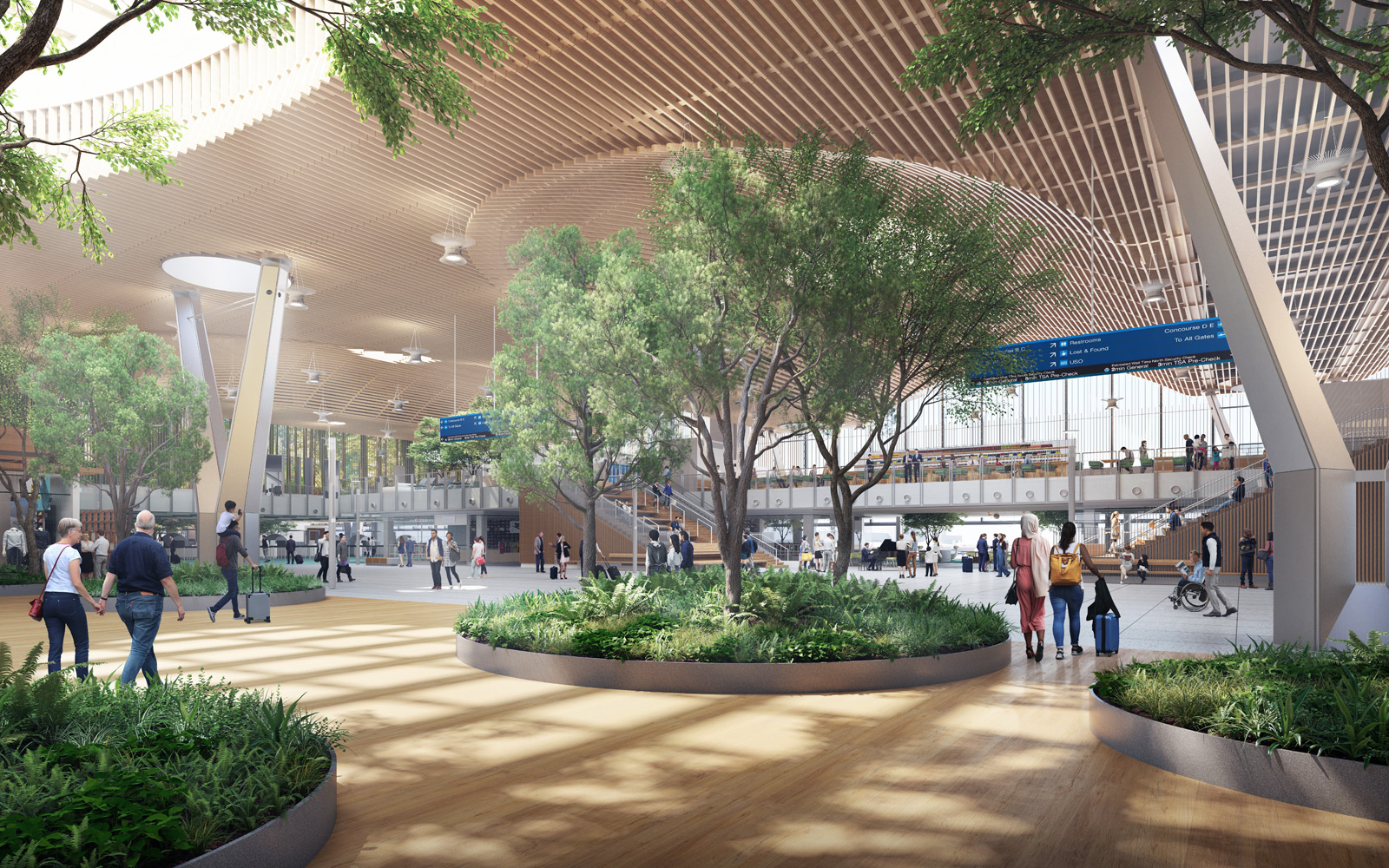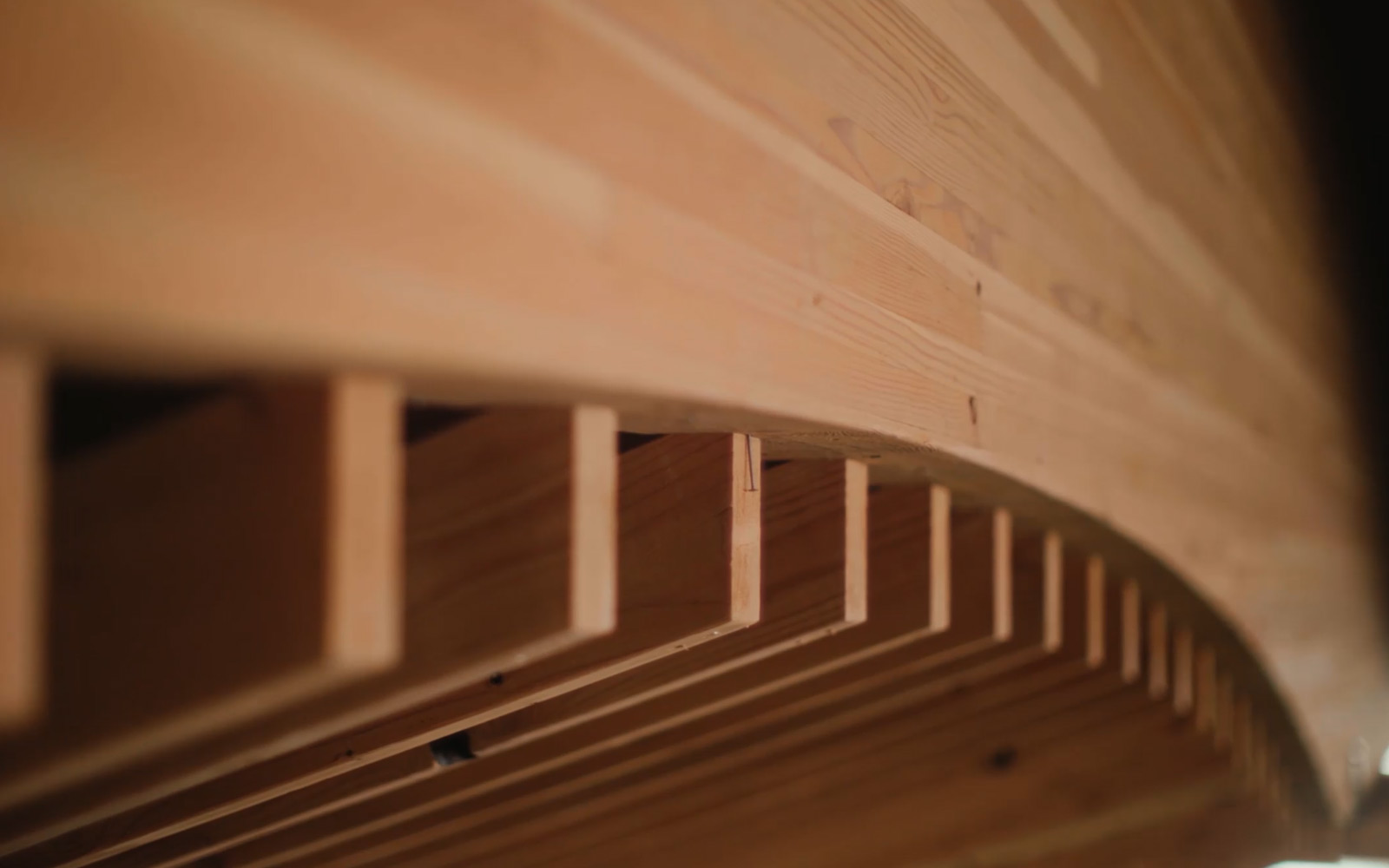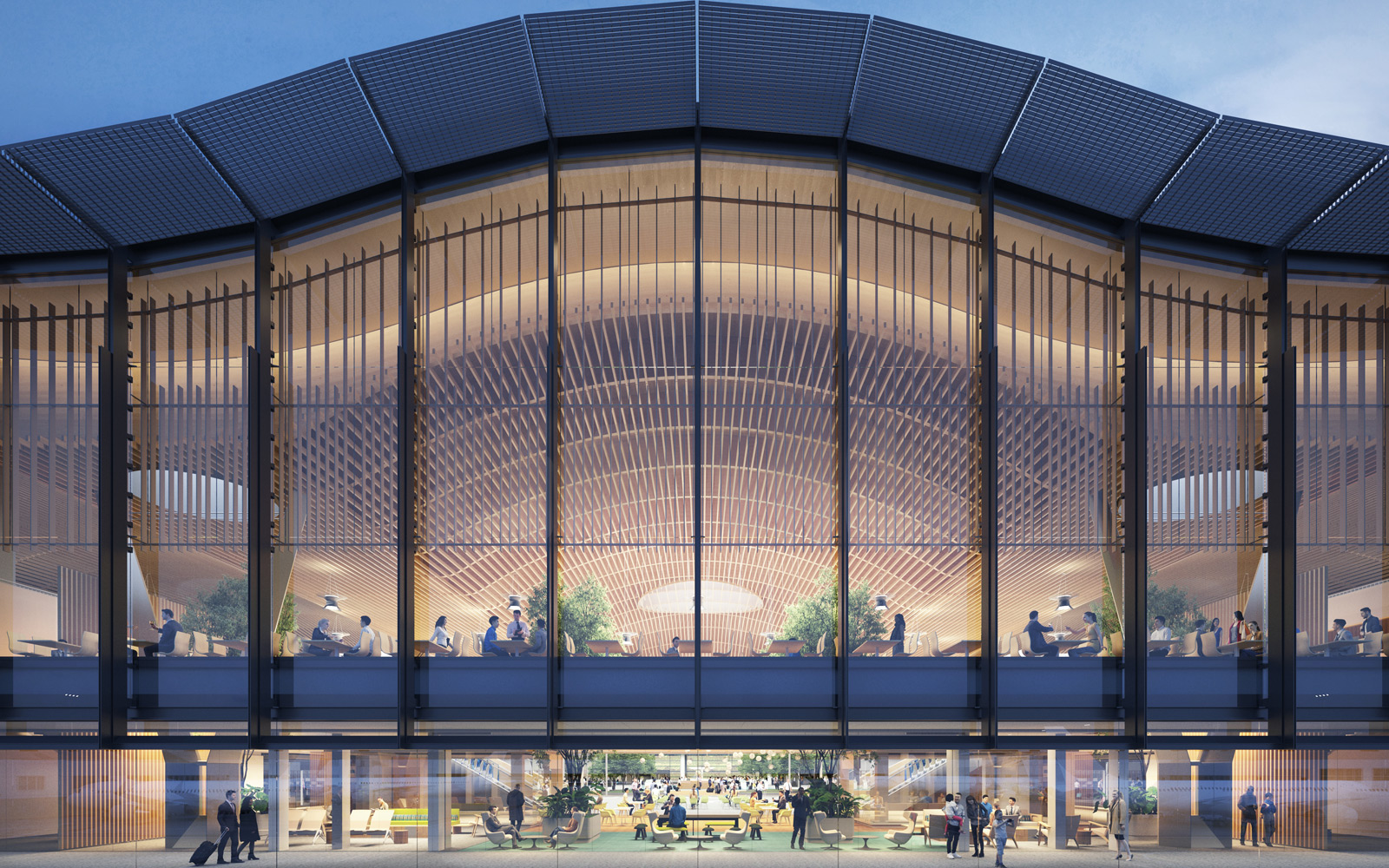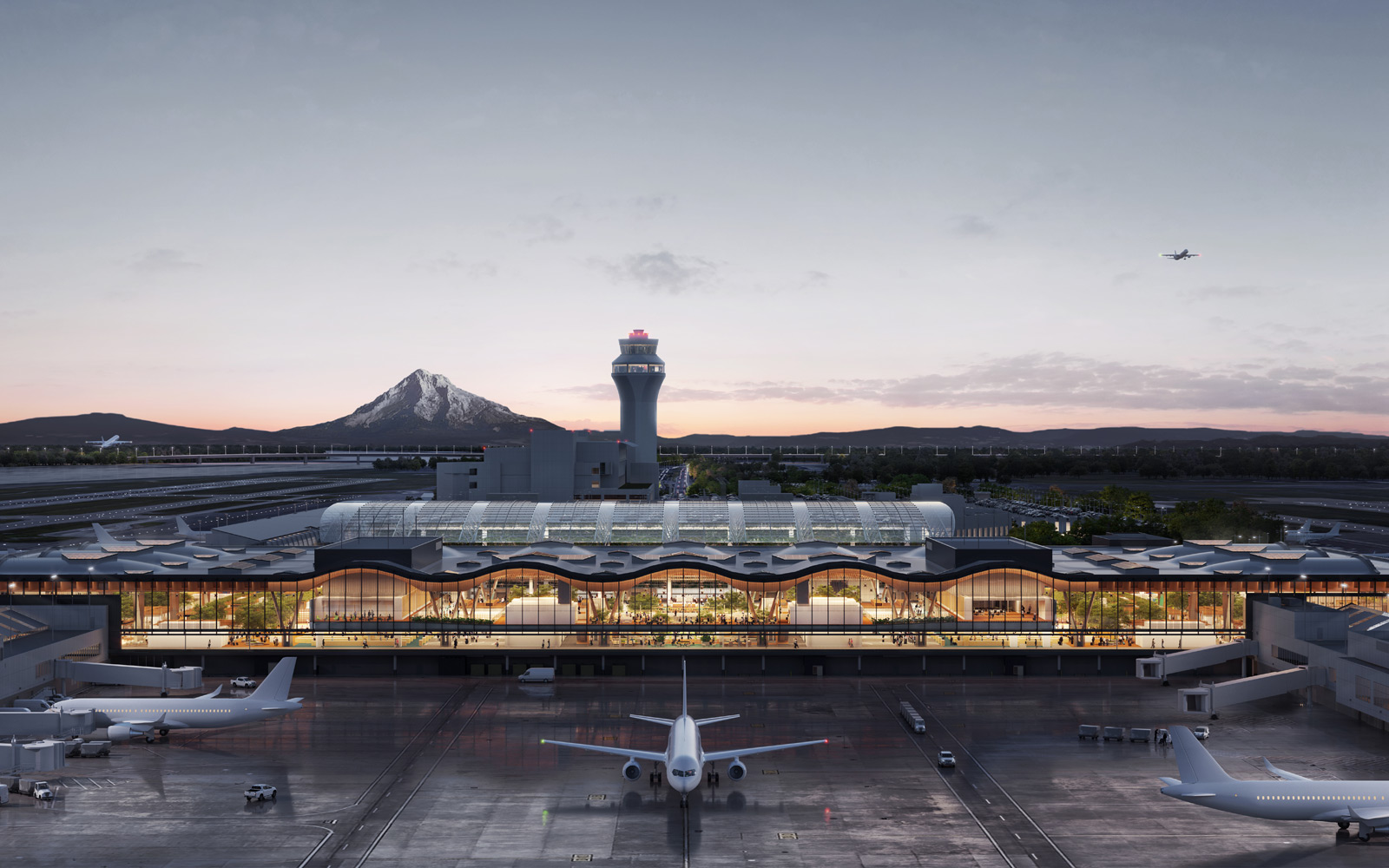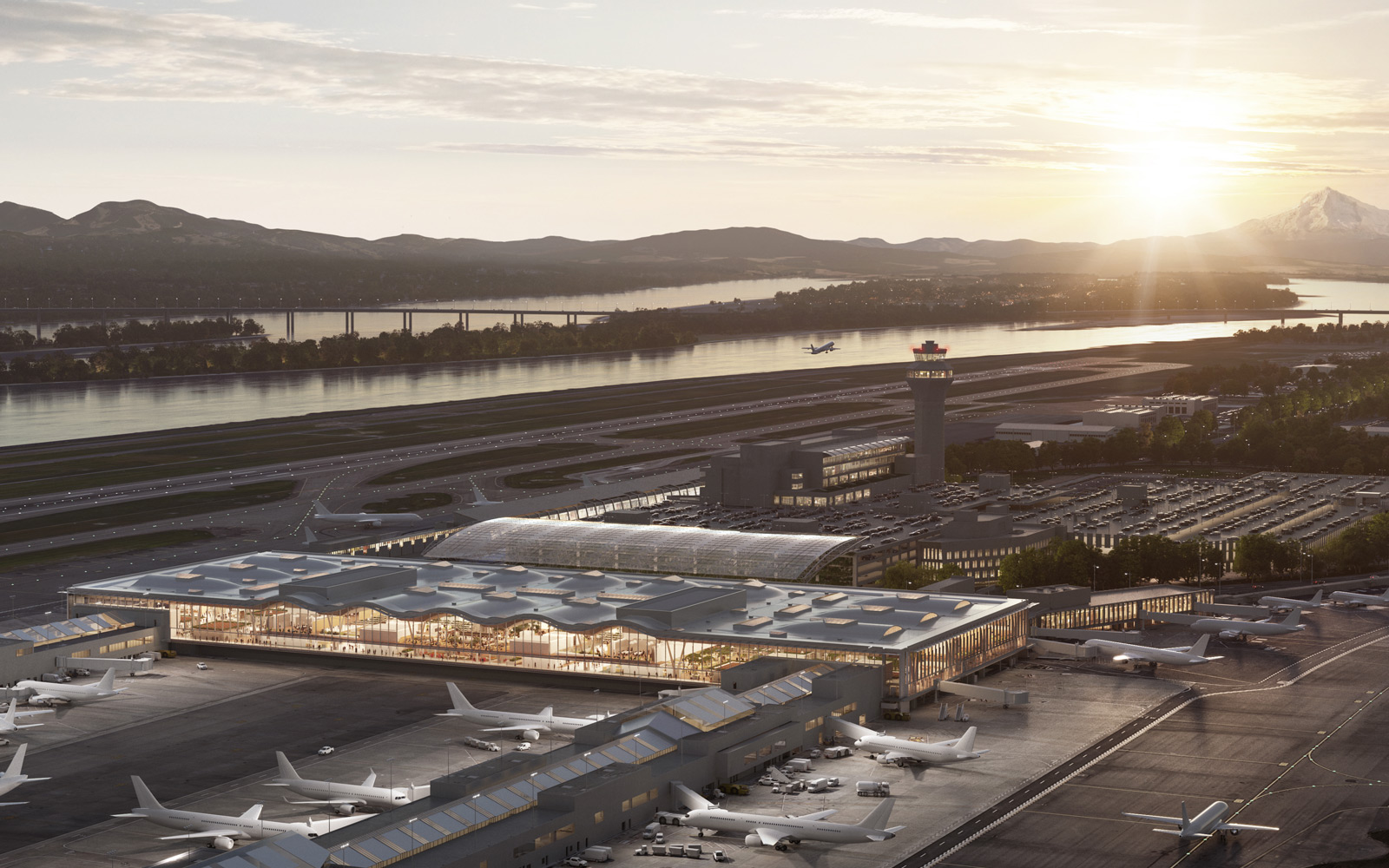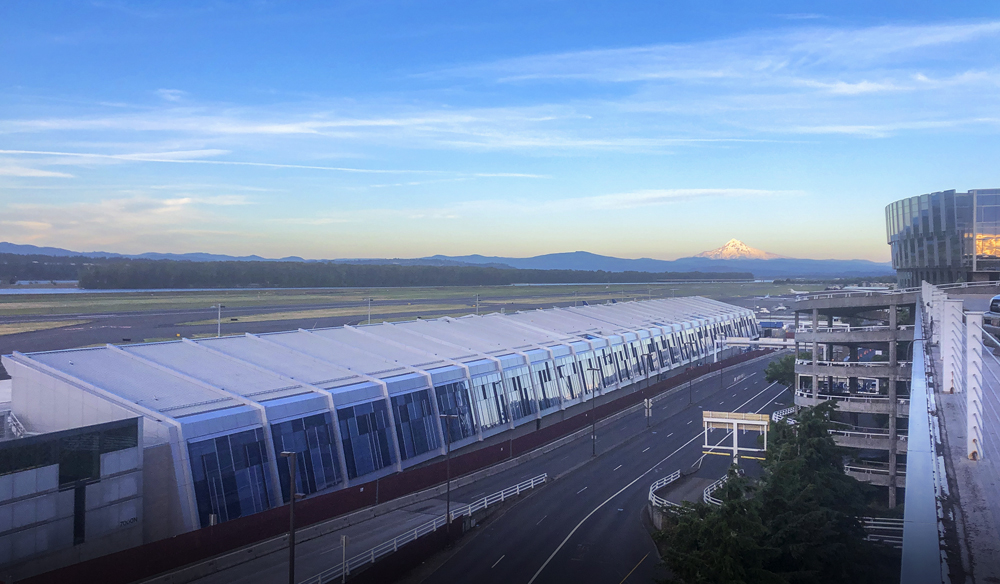
Quick update: The Concourse E expansion opened in 2020. Read more about the new PDX.
The new Concourse E represents a few big “firsts” for our region: The first-ever Tillamook Market outside of the Oregon Coast. The first permanent installations in Portland from world-acclaimed artist Jacob Hashimoto. And the first new gates opened at PDX in two decades.
We bet you’ve already seen some of the headlines about these milestones. But how about taking a guided tour of the new concourse? You might not have had a chance to see it for yourself just yet. (Unless you’re among the 2,000 builders who helped bring the vision to life.)
Some good news: We’re here to show you around — virtually, for now. We get that photos of ice cream aren’t anything like the real thing. So we’ve tapped a few architects, builders and artists for this insider tour. And whenever you get the chance to visit in real life, we’ll be ready with scoops of your favorite flavors and endless #PNW views.
Jacob Hashimoto’s flying kites
Let’s kick off our tour with Jacob’s two hanging art pieces. His presence in the concourse is sort of a homecoming for the New York City-based artist. Jacob grew up in Walla Walla, Washington. In his interview with PDX Next, he calls the Pacific Northwest “my aesthetic and creative home.” You can catch glimpses of his regional inspiration in both “The City” and “The Sky,” as the pieces are named.
“I started by looking at a map. It turns out that the shape of the city limits is a really interesting form. We've taken the outline of Portland and used it as the footprint for both pieces so that if you looked at them from above, they look just like the shape of the city,” Jacob says. “Both of the suspended sculptures are also built in the same way, using thousands of hanging disks.”
Look close enough at the kite-like discs and you’ll spot some familiar graphics. For example, you'll see the old airport carpet and the City of Portland’s flag embedded in the sculptures, which soar like clouds above the concourse’s common areas. If you were able to accurately count them all, you’d find 450 patterns and 11,000 kites.
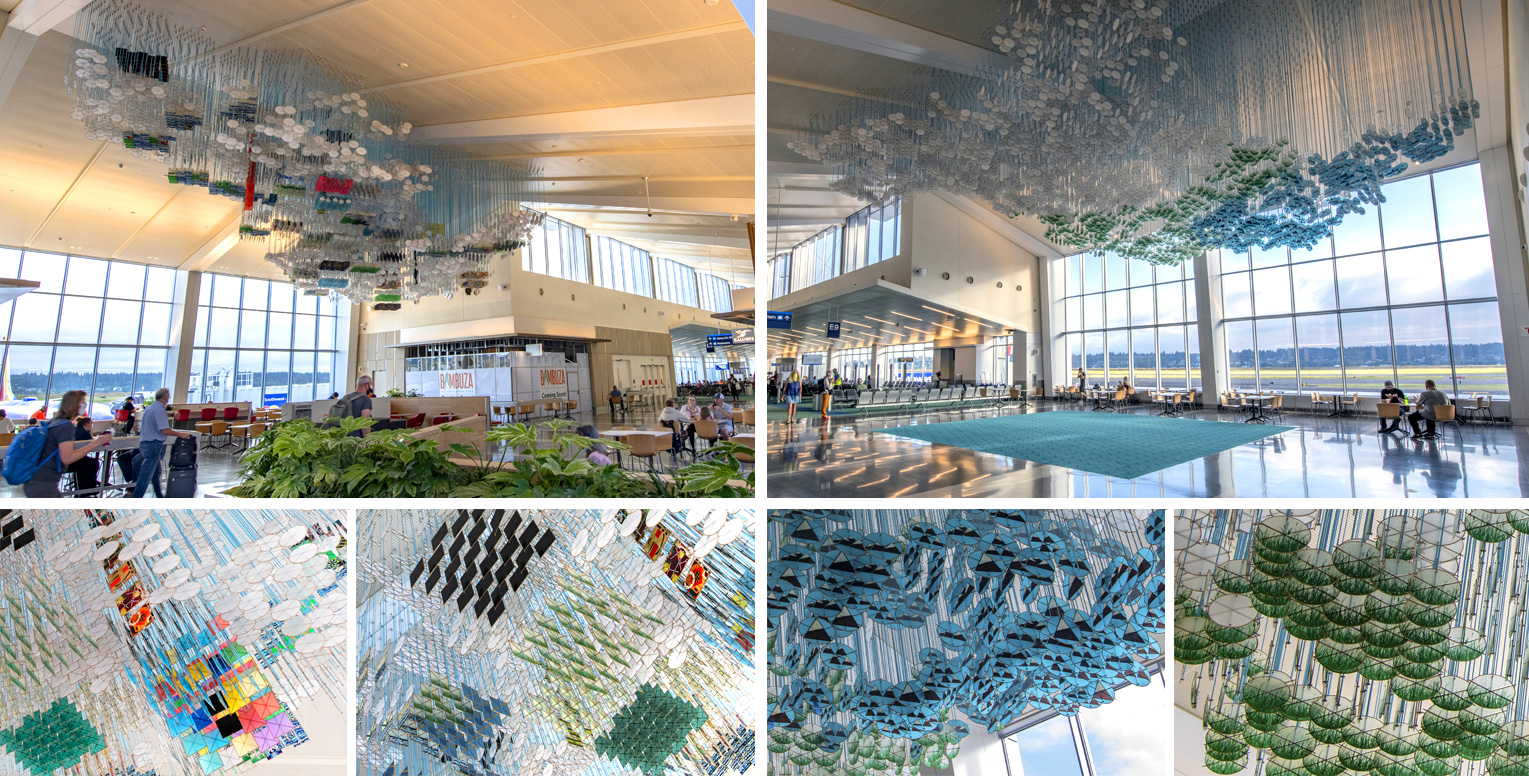
Walls of glass and views for miles
At the east end of the concourse extension, you’ve found your next photo op at the airport: a pretty epic view of Mt. Hood. Architects designed the space to take advantage of the surrounding scenery including the snowcapped mountain in the distance as well as all the runway action. In all, the concourse’s sweeping walls of windows contain 350,000 pounds of glass.
“Because of its high ceilings and the lack of columns, there are amazing views of the Columbia River, of Mt. Hood. It’s such an open, inviting space to be in,” says Pooja Kashyap in her PDX Next profile. Pooja is an architect at Hennebery Eddy, where she’s worked to make sure the Concourse E designs meet the highest standards for environmental sustainability.
Concourse E’s efficiency helps PDX reduce lighting energy and water use. And during construction, the team recycled 99% of construction waste and used 84% Forest Stewardship Council-certified wood. “What makes me proud to be on this project is that it’s on track to meet LEED Gold, which is not an easy achievement for an airport,” Pooja says.
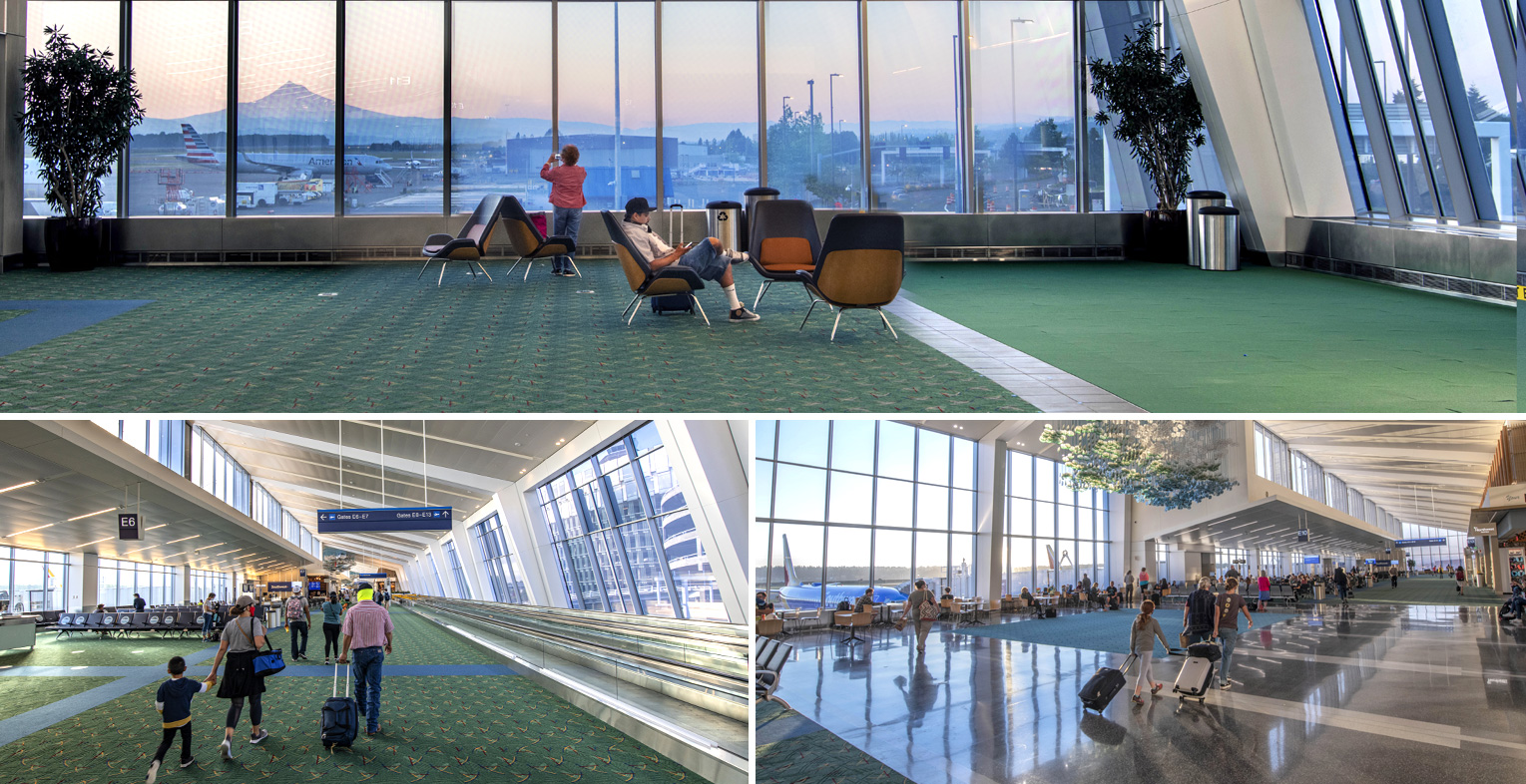
Ice cream (and more) at Tillamook
Before Concourse E opened, you’d have to hitch a ride all the way to the Oregon Coast to visit the Pacific Northwest’s iconic creamery. Well, now you only need to make your way to PDX. Concourse E has the only Tillamook Market built outside of Tillamook County in the century-long history of the farmer-owned co-op.
It’s a pretty big deal if you ask Caitlin Powell, project manager at Skanska — the construction firm that brought in 75 subcontractors to build the concourse. “I'm really excited for [the public] to eat at the Tillamook ice cream bar,” she says in her PDX Next profile. “I am a huge ice cream fan. I could eat it for breakfast if I let myself.” (We see you, Caitlin.)
If you’re not quite in the mood for ice cream, Tillamook has cheesy burgers and more “dairy done right” on the market’s menu. It’s one of 10 shopping and dining spaces inside E, which will individually open in the coming months. Along with Tillamook, the first spots to turn on their lights are Calliope (accessories and gift boutique), Jamba and Your Northwest Travel Mart, with more of your favorite restaurants and bars in the works.
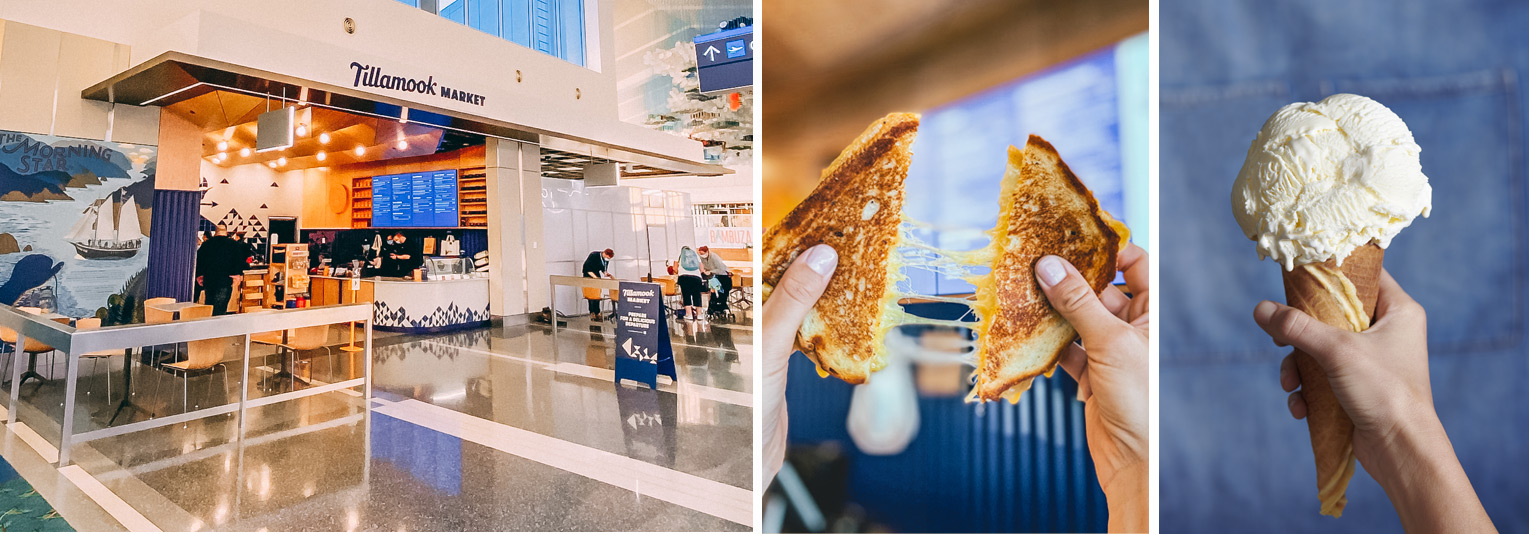 (Credit: Tillamook)
(Credit: Tillamook)
The Building By the Numbers
We’ll wrap up with a few facts and figures. These give you a sense of the scale of this addition — one of several PDX Next projects bringing more local character to the airport.
- New airline gates: 6 (first new gates at PDX in nearly 20 years)
- Shopping and dining locations: 10
- Total gates on the concourse: 13
- Building dimensions: 830 feet added for a gain of 148,000 square feet of terminal space
- Window glass: 350,000 pounds of glass installed by local glaziers
- Project budget: $215 million (funded primarily by the airlines serving PDX)
- Time to build: 2 years, 3 months (started March 2018)
- People involved: More than 2,000 (architects, designers, construction trades, artists, etc.)
- Contractors: 1 prime contractor (Skanska) assisted by more than 75 local subcontractors
- Architecture firms: 2 (Hennebery Eddy and Fentress)
